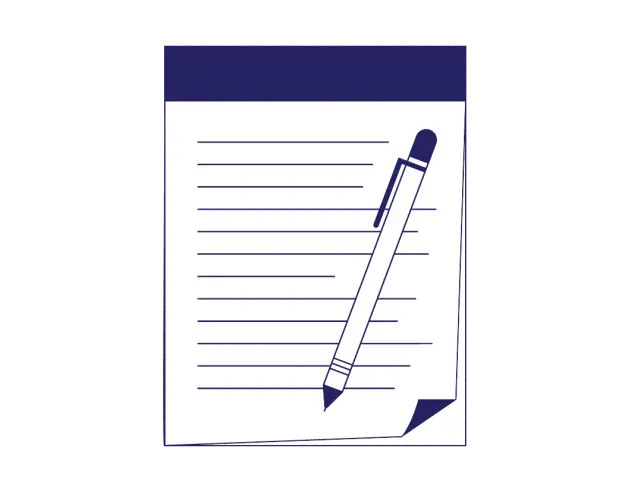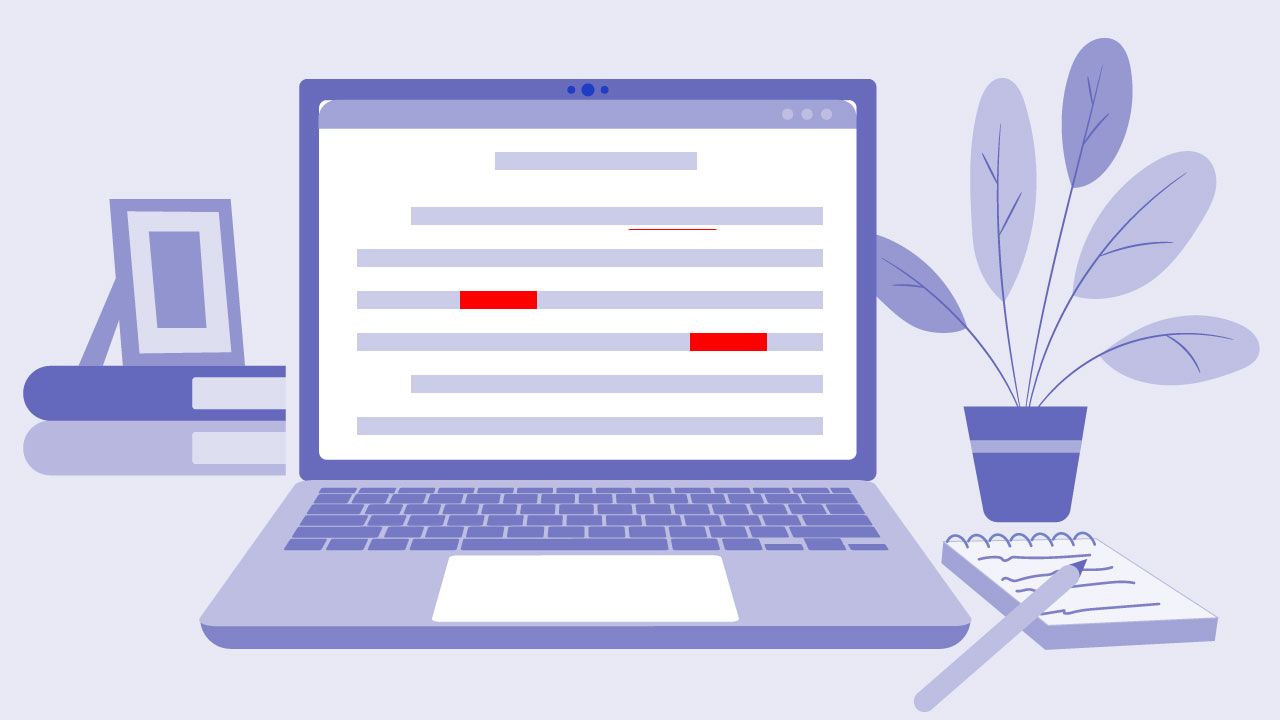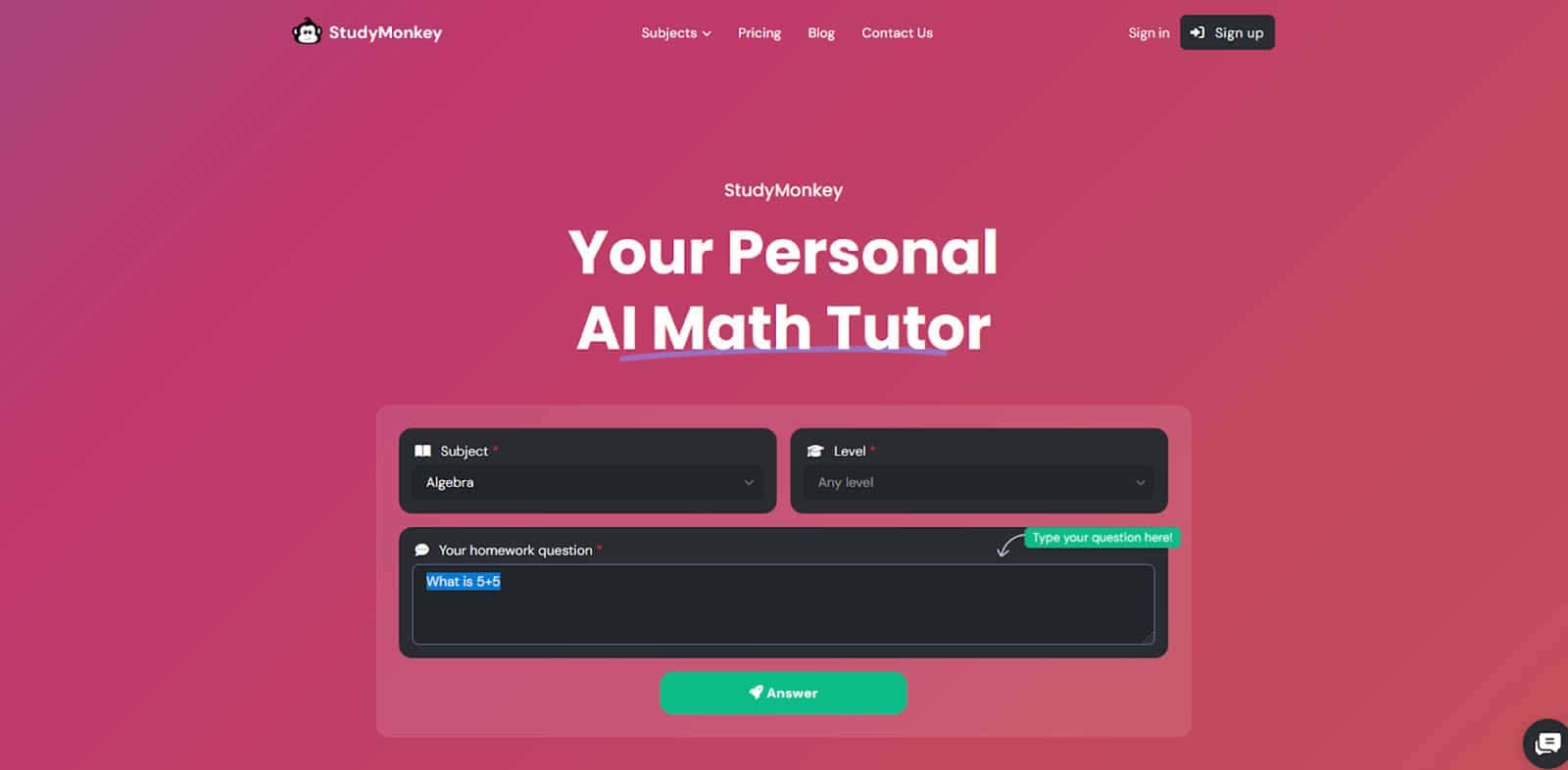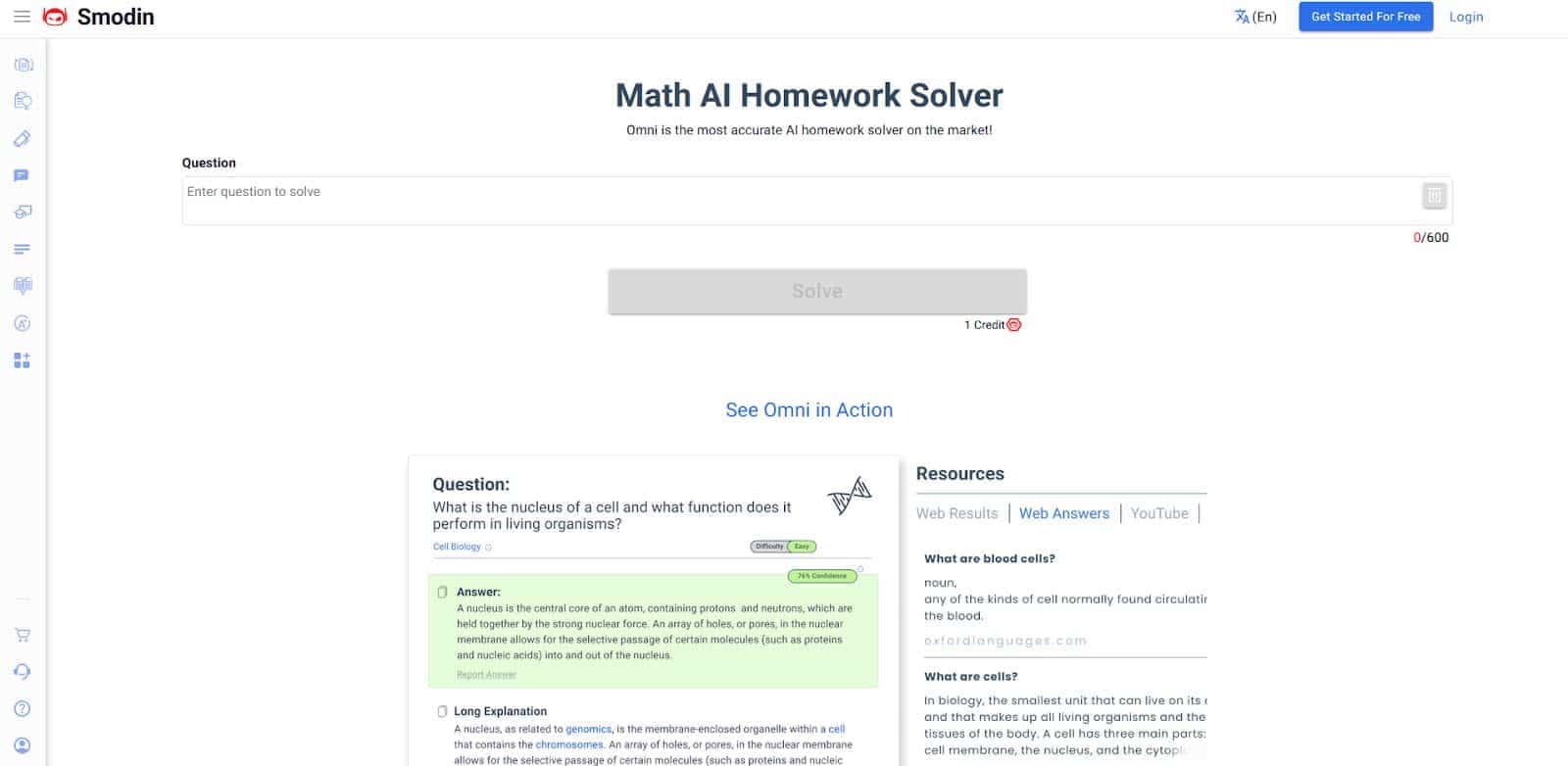8 Tips to Write Better Essays in English
Learning a foreign language is an overwhelming experience, especially if it’s one of the most widely spoken languages in the world – English.
Many people are under the impression that learning to read and speak in English is enough without realizing that written English skills are an equally vital asset to have.
From improving academics to boosting career prospects – the ability to write in English not only lets you communicate and express yourself better in today’s globalized world but also makes you more confident.
An effective way to improve your writing skills is to write essays. Wondering where to begin? We bring you eight useful tips to write better essays in English.

1. Keep a Vocabulary Notebook
Using the right vocabulary is an essential element of writing essays. When you make efforts to expand your vocabulary, you will be able to pick accurate words to take your writing to the next level.
Instead of coming across new words and forgetting about them, it’s a good idea to make a note of them in your vocabulary notebook. Doing this helps you remember the meanings of new words and you can also refer to it while writing essays.
So, give yourself a target to learn at least ten new words every day, which you can jot down in your diary and take baby steps in building a strong vocabulary.
2. Refer to Credible Sources
Research forms the first step in writing any kind of essay. The stronger your research, the better is the quality of your essay.
At a time when we have access to a wide range of data, it’s important to evaluate research sources carefully and only refer to credible ones. For example, Wikipedia is not a reliable source and should not be attributed to while writing essays.
Take the effort to read through published journals, research studies, scholarly papers, academic databases, and encyclopedias published within the last 10-15 years. It’s also important to assess the credibility of the author while evaluating the source.
3. Draft a Basic Outline
Once you’ve done your research, don’t rush to write. Take a moment to draft a basic outline for your essay and organize your research and findings.
“Is that necessary,” you ask? Very much.
Working on an outline lets you approach the essay in an organized manner. It serves as the skeleton of your paper while ensuring you’re not missing out on any information and that your points flow logically.
Most essays are categorized into – introduction, body, and conclusion.
The introduction is where you introduce the topic and give context. The body paragraphs need to include your arguments and research methodology (if any). The conclusion needs to reiterate the thesis statement and tie all the points together.
4. Hook the Reader
With attention spans getting shorter with time, it’s become all the more important to start with a bang and hook the reader from the beginning to ensure they are invested in your writing.
Essay hooks refer to the first one or two sentences of your essay which have the power to make or break the reader’s interest. The key is to write a hook that grabs the reader’s attention and reels them in.
From an alarming statistic and relevant quote to using humor and asking a rhetoric question – there are various tactics you can employ to keep the reader engaged.
If you’re unable to think of an impactful essay hook, don’t waste too much time on it. Finish the rest of your essay and come back to write a compelling hook later.
5. Use the Pomodoro Technique
It’s not easy to write an essay in one go, especially if it’s not in your first language.
A smart way to approach essay writing is to use the Pomodoro technique. This technique asks you to set a timer for 25 minutes to finish your task in question and then take a 5-minute break. After four cycles of repeating this, you get to take an extended 20-minute break.
So, start with breaking down the assignment into smaller tasks such as research, outlining, writing the different paragraphs, citing references and proofreading. You can then set the timer, start working on the essay as per the technique and track your progress.
Using this technique keeps distractions at bay and helps you stay more focused.
6. Pay Attention to Grammar Rules
You may raise interesting points in your essay, but poor grammar disrupts the reading experience and should be avoided at all costs.
Be careful when adding punctuations, check your sentence formations, avoid passive voice as much as possible and know the difference between adjectives, adverbs, nouns and verbs.
So abide by grammar rules to deliver a well-written and cohesive essay.
7. Write with Clarity
You might be tempted to use complex metaphors and jargons to impress the reader, but the truth is, none of that guarantees “good” writing.
One of the most important ingredients of effective writing is clarity. You don’t want to leave the reader confused and puzzled after reading your essay. So, use simple words, stop beating around the bush and explain concepts with the help of examples because clear writing always wins.
8. Reread the Essay
Finally, make it a point to proofread your essay (multiple times) to ensure you have covered all the aspects, cited references accurately and not made any silly errors.
It’s a good idea to read your essay out loud so you’re able to identify errors and awkwardly formed sentences with ease. You should also get a friend or family member to read your essay, to spot mistakes or discrepancies that you may have overlooked.
You may also like:
- I Don’t Understand, Do You?
- Simple English Videos
- Listen&Learn: The Berlin Wall
35 comments
Thanks a lot all we can derive from reading is the technique to write with clarity, good research and involvement of readers in writing.
Thank a lot dear EnglishClub, it’s help me a lot
I think it is very good site for learn essay writing
As a teacher trainer this contribution is helpful
Thanks for the tips! I’ll have an essay tomorrow and this will surlely prepare me!
Thank you so much
Thanks Please I will like to know more
thank you so much for your amazing informations
encyclopedias
encyclopaedias
Nice one but I don’t understand yet
Knowledge supporter is who u are, keep d good work nd ur reward is from God nd thanks.
thanks alot for your tips…your tips will help me alot while examss!!!
Thank you so much for information ☺️
Thank you ☺️
Thank you 💯💯💯💯💯💯
My hobby is home garden
ur intentinon and thoughts was very nce its useful to somny pepole to learn english tysomuch adela belin
Thanks you for helping
This did help a lot! Thank you very much 🥰
Good tips, I should give it a try, after all, we all improve by exercising hard so I’ll just do the same thing, but right now I gotta focus on what matters, and what I need now is to read as much as I can to know how to spell the words right. Is grammar so important in this task, I mean can’t I just pick the things up because of my experience in listening skill ?
Thanks for the information!
This is a nice explanation ,,,,,proud of you!
Is very interesting for me I really apreicete you help
Thanks so much for these useful tips!! Now, I need to start preparing my essay (“starting” has been always the stone on my way :$)
Please, what is the difference between an essay and an article?
Are they same?
Thanks in advance,
Thanks & best regards English Club
Helpful updated tips to share with our students!! thankssss
I want to know if it is only at the University or if we may take the course online.
Thank you verry much for important advices
thank for your key points, this is really helpful
Thank you and best wishes,
Very pragmatic and helpful essay. Thank so much English club
Leave a comment
Email * (not published)
Log In 0 The website uses cookies for functionality and the collection of anonymised analytics data. We do not set cookies for marketing or advertising purposes. By using our website, you agree to our use of cookies and our privacy policy . We're sorry, but you cannot use our site without agreeing to our cookie usage and privacy policy . You can change your mind and continue to use our site by clicking the button below. This confirms that you accept our cookie usage and privacy policy.
Free English Writing Lessons
Improve english writing – video.
Learn how to improve your English writing in this video lesson. You’ll see how you can make your written English clearer, easier to read and more effective.
Try Your First Online Class With A Teacher
Book your first class for just 8.99 USD!
Try A Class
Formal and Informal English – Video
Learn how to use formal and informal English in spoken or written English. You can learn the differences between formal and informal English in this lesson.
More English Writing Lessons
Using colons and semicolons – video.
See Full Lesson
Improve Your IELTS Writing Grammar Score – Video
How to write a band 9 ielts essay – video, english spelling rules and common mistakes – video, how to tell a story in english – video, fce (b2 first) writing exam – write a review – video, how to write a cv in english – video, ielts writing band 7 – video.
- Facebook 35
- Odnoklassniki icon Odnoklassniki 0
- VKontakte 0
- Pinterest 1
- LinkedIn 23
You are using an outdated browser. Please upgrade your browser or activate Google Chrome Frame to improve your experience.
Baby Steps: 10 Proven Tips to Write Better Essays in English
If writing an essay sounds a little bit scary, just think of it as a chance to improve your writing skills .
Nobody expects your first essay to be perfect. Just make sure you learn something new every time you write an essay, and you will grow your abilities.
We’re going to help you out with ten tips for writing better essays while you’re learning English .
1. Create a Word Bank
2. act like a reporter, 3. create topic sentences, 4. argue both sides, 5. read backwards, 6. use an online thesaurus and a dictionary, 7. combine and separate sentences, 8. have a native english speaker edit your essay, 9. review the whole essay with your friend, then rewrite it, 10. use online apps, and one more thing....
Download: This blog post is available as a convenient and portable PDF that you can take anywhere. Click here to get a copy. (Download)
This is an interesting approach to writing your essay. First, choose a topic and write a thesis . A thesis is the main argument of your essay. For instance, if your topic is reading, your thesis might be “Reading makes you smarter.”
Once you have a thesis, think about your main topic and find words that relate to it in different ways. Then, branch out (broaden, diversify) your list to words that aren’t as closely related to your main topic.
For the example above, your primary list might include words like “books,” “reading” and “intelligent.” Your other “branched out” list might include “Harry Potter,” “reading by a fire” or “test scores.”
This process will help expand your vocabulary over time. Using these words when you write will also make your essay more vibrant (energetic, colorful).
When you are first assigned the topic, go ahead and really explore the possible options for your thesis. Ask questions. Get curious. The more questions you ask before you start writing, the more information you will have to use in the essay.
A strong essay is one that covers a lot of content in a succinct (short, to-the-point) way. This process of acting like a reporter will give you valuable quotes, resources and vocabulary to begin the writing process.
For instance, if you’re writing about a new diet plan , you might ask questions like, “Who is the best candidate for this diet plan?,” “How can someone get started?” and “What is the hardest part of this plan?”
A topic sentence is the first sentence in a paragraph, and it summarizes the rest of the paragraph. You can create them first to help you stay on track when writing your essay.
For the thesis “Reading makes you smarter,” one paragraph’s topic sentence might be, “Newspapers make you more aware of current events.” Another paragraph’s topic sentence could be, “Reading plays and classic literature will make you more cultured.”
If you’re writing about the three main issues facing writers today, you could write three full sentences that each address one main issue. Set these aside. Then, when you start writing the essay, refer to your topic sentences to create a solid structure that begins at point A and ends at point C.
If you have to write a longer or more complex essay, it might help to outline both sides of the argument before you start writing. When you write the essay, you will need to choose one side to focus on. But as you prepare, having a side-by-side list of points can be helpful in developing your thesis.
Also, by arguing for the opposite side of your opinion, you will learn which points you need to better address in your essay. You will learn more about the topic, and you will gain more vocabulary words to enrich the essay.
As an example, you might be writing an essay arguing that people should drink less coffee. To argue both sides, you’ll need to consider the opposite side: the benefits of coffee. How will people quit if they are addicted? What about the antioxidants in coffee? Aren’t those good for you? Really explore the entire concept (both sides of the argument) before you write.
Proper grammar is difficult for even the most fluent English speakers. Because you are learning English, you actually have an advantage. Many native speakers learned improper grammar from the start. It’s difficult to undo the damage caused by a lifetime of writing improperly.
As you learn the English language, make a serious effort to practice your grammar and sentence structure. One way to spot improper grammar in your own English writing is to read each sentence backwards (start with the last word and end with the first). This way, you won’t be fooled by how the words sound when you read them in your head.
Is everything in the correct tense (past, present, future, etc.)? If you’re writing about plurals, are the possessive nouns plural? Are the apostrophes in the right places? Does every sentence end with a punctuation mark (period, question mark, exclamation point)? Reading the text backwards makes you focus on the rules of grammar instead of the flow of the sentence.
You might have learned a large number of fancy words when studying for an entrance exam. But before you start using them in academic essays, be very sure you know what they mean in the context of your essay. This is where the dictionary can come in handy .
A thesaurus is another valuable tool when writing an essay. A thesaurus tells you synonyms, or words that have the same or a similar meaning to the word you look up. It’s important because it can add some volume to your essay and increase the impact of your words.
For example, if you’re writing about cooking, the words “stir” and “add” might come up a lot. This repetition is boring for a reader.
So instead of constantly saying, “Add the tomato” and “add the eggs,” a thesaurus will teach you to say things like “whisk in the eggs” or “gently fold in the tomatoes.” See? It sounds a lot better and adds interest to your essay.
Visual Thesaurus is a resource that works just like a regular thesaurus, but it also shows you the connections between the words. For example, if you type in the word “stir,” you’ll immediately see a whole circle of other words connected to “stir” with lines. From there, you can click on any of the words in the circle (like “move,” in this case) and then see all the words related to that word. This helps you find and learn new words quickly, and it’s also fun!
Once the essay is written, go back through the writing to find any sentences that seem too long or wordy. Break these into two or more sentences.
For example, the following sentence is too long, which makes it unclear:
If you want to write in another language, you need to practice writing in creative ways, like writing on a blog, writing fun poems or texting a friend who speaks the language you’re learning every day.
Instead, you could write it as two clearer sentences (with less repetition of the word “writing”):
If you want to write in another language, you need to practice in creative ways every day. For example, you could start a blog, create fun poems or text a friend.
Do the opposite with sentences you find too short.
Also, look for sentences that are very closely related to one another. If two sentences seem like the thoughts are connected, you can combine them with a semicolon ( ; ).
For example, the following sentences are very closely related:
Learning to write in another language can be really difficult, especially when you’re first getting started. That’s why it helps to practice every day.
That’s why you could write it this way:
Learning to write in another language can be really difficult, especially when you’re first getting started; daily practice is helpful.
Meet up with a friend who is fluent in English (or, at least, more fluent than you). This friend can edit your essay and point out any repetitive errors.
If they find mistakes that you make often, you will be able to watch more closely for that error as you write future essays. This friend will also be able to point out grammatical or spelling errors that you might have missed.
If you don’t have any friends who are fluent in English, you can use a website like Conversation Exchange . This is a free site where native English speakers will correct your writing. In exchange, you correct the writing of someone learning your native language.
Once you and your friend have both reviewed your essay and marked any mistakes, rewrite the whole thing. This step is important. Just noting that you made some mistakes will not help you learn how to avoid them in the future.
By rewriting the essay with the corrections in mind, you will teach yourself how to write those sections properly. You will create a memory of using proper grammar or spelling a word correctly. So, you will be more likely to write it correctly next time.
Lastly, there are some fantastic online resources that can help improve your writing. For instance, Hemingway Editor can review your document to find any confusing or wordy sentences. You can rewrite these to make them easier to understand.
You could also head over to Essay Punch to find resources, tools and support that can help improve your writing skills. Grammar Book is a great resource for practicing proper grammar and spelling.
If you need some practice with words and grammar, but you learn better from audio and video, it can be challenging to improve your writing ability. One way to improve your English skills with a multimedia approach is using a language learning program like FluentU .
Since many online resources are readily accessible, feel free to experiment with your options. Try to find the ones that cater best to your learning habits and needs.
The advice in this post is mainly for improving your essay writing over time. However, if you want a more professional opinion for an important essay, you can also use Scribendi . Scribendi is an online essay editing resource that helps with academic and admissions essays. If you’re applying to a school or are writing an important paper, you may want to consider their services to make sure your essay is the best it can be.
Learning a new language is certainly an ambitious (challenging) task. There are so many small details to learn, and the process takes a lot of time and commitment. But with practice and study, you will improve.
It takes even more effort to become a strong writer in a new language, but these tips will help you get started.
Hopefully, you were able to find one or two tips that you believe will help you improve your essay writing abilities. Over time, try to use all of these strategies (or at least more than one) in your writing routine. Good luck!
If you like learning English through movies and online media, you should also check out FluentU. FluentU lets you learn English from popular talk shows, catchy music videos and funny commercials , as you can see here:

If you want to watch it, the FluentU app has probably got it.
The FluentU app and website makes it really easy to watch English videos. There are captions that are interactive. That means you can tap on any word to see an image, definition, and useful examples.

FluentU lets you learn engaging content with world famous celebrities.
For example, when you tap on the word "searching," you see this:

FluentU lets you tap to look up any word.
Learn all the vocabulary in any video with quizzes. Swipe left or right to see more examples for the word you’re learning.

FluentU helps you learn fast with useful questions and multiple examples. Learn more.
The best part? FluentU remembers the vocabulary that you’re learning. It gives you extra practice with difficult words—and reminds you when it’s time to review what you’ve learned. You have a truly personalized experience.
Start using the FluentU website on your computer or tablet or, better yet, download the FluentU app from the iTunes or Google Play store. Click here to take advantage of our current sale! (Expires at the end of this month.)
Enter your e-mail address to get your free PDF!
We hate SPAM and promise to keep your email address safe

- Link to facebook
- Link to linkedin
- Link to twitter
- Link to youtube
- Writing Tips
How to Write Top-Graded Essays in English

- 5-minute read
- 7th December 2022
Writing English papers and essays can be challenging at first, but with the right tools, knowledge, and resources, you can improve your writing skills. In this article, you’ll get some tips and tricks on how to write a top-graded essay in English.
Have you heard the saying “practice makes perfect”? Well, it’s wrong. Practice does make improvement, though. Whether you’re taking an English composition class, studying for the IELTS or TOEFL , or preparing to study abroad, you can always find new ways to practice writing in English.
If you practice on a daily basis, you’ll be exercising the skills you know while challenging yourself to learn even more. There are many ways you can practice writing in English daily:
- Keep a daily journal.
- Write practice essays.
- Do creative writing exercises .
Read in English
The best way to improve your writing is to read English books, news articles, essays, and other media. By reading the writing of other authors (whether they’re native or non-native speakers), you’re exposing yourself to different writing styles and learning new vocabulary. Be sure to take notes when you’re reading so you can write down things you don’t know (e.g., new words or phrases) or sentences or phrases you like.
For example, maybe you need to write a paper related to climate change. By reading news articles or research papers on this topic, you can learn relevant vocabulary and knowledge you can use in your essay.
FluentU has a great article with a list of 20 classic books you can read in English for free.
Immerse Yourself in English
If you don’t live in an English-speaking country, you may be thinking, “How can I immerse myself in English?” There are many ways to overcome this challenge. The following strategies are especially useful if you plan to study or travel abroad:
- Follow YouTube channels that focus on learning English or that have English speakers.
- Use social media to follow English-speaking accounts you are interested in.
- Watch movies and TV shows in English or use English subtitles when watching your favorite shows.
- Participate in your English club or salon at school to get more practice.
- Become an English tutor at a local school (teaching others is the best way to learn).
By constantly exposing yourself to English, you will improve your writing and speaking skills.
Visit Your Writing Center
If you’re enrolled at a university, you most likely have a free writing center you can use if you need help with your assignments. If you don’t have a writing center, ask your teacher for help and for information on local resources.
Use Your Feedback
After you submit an English writing assignment, you should receive feedback from your teacher on how you did. Use this feedback to your advantage . If you haven’t been getting feedback on your writing, ask your teacher to explain what issues they are seeing in your writing and what you could do to improve.
Find this useful?
Subscribe to our newsletter and get writing tips from our editors straight to your inbox.
Be Aware of Your Common Writing Mistakes
If you review your feedback on writing assignments, you might notice some recurring mistakes you are making. Make a list of common mistakes you tend to make when writing, and use it when doing future assignments. Some common mistakes include the following:
- Grammar errors (e.g., not using articles).
- Incorrect vocabulary (e.g., confusing however and therefore ).
- Spelling mistakes (e.g., writing form when you mean from ).
- Missing essay components (e.g., not using a thesis statement in your introduction).
- Not using examples in your body paragraphs.
- Not writing an effective conclusion .
This is just a general list of writing mistakes, some of which you may make. But be sure to go through your writing feedback or talk with your teacher to make a list of your most common mistakes.
Use a Prewriting Strategy
So many students sit down to write an essay without a plan. They just start writing whatever comes to their mind. However, to write a top-graded essay in English, you must plan and brainstorm before you begin to write. Here are some strategies you can use during the prewriting stage:
- Freewriting
- Concept Mapping
For more detailed information on each of these processes, read “5 Useful Prewriting Strategies.”
Follow the Writing Process
All writers should follow a writing process. However, the writing process can vary depending on what you’re writing. For example, the process for a Ph.D. thesis is going to look different to that of a news article. Regardless, there are some basic steps that all writers should follow:
- Understanding the assignment, essay question, or writing topic.
- Planning, outlining, and prewriting.
- Writing a thesis statement.
- Writing your essay.
- Revising and editing.
For more information on how to write an essay in English, read “How To Construct an Excellent Essay in 5 Steps.”
Writing essays, theses, news articles, or papers in English can be challenging. They take a lot of work, practice, and persistence. However, with these tips, you will be on your way to writing top-graded English essays.
If you need more help with your English writing, the experts at Proofed will proofread your first 500 words for free!
Share this article:
Post A New Comment
Got content that needs a quick turnaround? Let us polish your work. Explore our editorial business services.
4-minute read
What Is Market Research?
No matter your industry, conducting market research helps you keep up to date with shifting...
8 Press Release Distribution Services for Your Business
In a world where you need to stand out, press releases are key to being...
3-minute read
How to Get a Patent
In the United States, the US Patent and Trademarks Office issues patents. In the United...
The 5 Best Ecommerce Website Design Tools
A visually appealing and user-friendly website is essential for success in today’s competitive ecommerce landscape....
The 7 Best Market Research Tools in 2024
Market research is the backbone of successful marketing strategies. To gain a competitive edge, businesses...
Google Patents: Tutorial and Guide
Google Patents is a valuable resource for anyone who wants to learn more about patents, whether...

Make sure your writing is the best it can be with our expert English proofreading and editing.
Writing Skills: How to Write an Essay in English
Struggling with another English essay? Inside, find a basic structure that will help you make the essay writing process easier and turn in a remarkable essay.
Determine the Purpose of Your Essay and Stick to It
Brainstorm ideas, develop a thesis statement, create an outline, start writing, edit and proofread, the bottom line.

For many beginning English learners writing a whole essay in English can turn out to be a challenge. It’s no wonder why – English students often face a lot of difficulties because there are so many grammar rules and stylistic nuances that it can be daunting for even the most determined students.
However, essays are an integral part of the education system. Essays allow teachers to evaluate your critical thinking and written communication skills. You’ll also need good essay writing skills if you want to apply for universities in English-speaking countries.
The great news is that, with a little hard work and determination, anyone can become a proficient English writer. In this article, we'll discuss some tips that will boost your writing skills and help you ease the essay writing process. Keep reading and learn how to start writing remarkable essays in English!
Discover how to learn words 3x faster
Learn English with Langster
There are many different types of essays, and each one requires a different writing approach. Some essays, such as persuasive essays , require a lot of research to form well thought-out arguments. Others, such as personal narratives , are more informal and may not require as much additional research.
If you're assigned a research paper , you'll need to use more factual evidence to support your claims. Admissions essays , in turn, require you to present yourself to the admissions committee and demonstrate why you're a good fit for their school.
In an expository essay you explain or define a concept, while in a descriptive essay you'll describe something in great detail.
Understanding the purpose of your essay will help you determine what kind of information to include and how best to organize it. No matter what type of essay you're writing, it's important to determine the purpose early on and stick to it . Keep in mind that trying to accomplish too many things in one essay will only confuse and frustrate your reader.
When you want to write an essay, one of the most important steps is brainstorming . This is when you sit down and come up with ideas for your essay.
Here’s a few questions to get your brainstorming session started. What am I trying to say with my essay? What points do I want to make? What examples can I use to support my claims?
Simply jot down all of your ideas on the topic, and then look for common themes and patterns. By taking the time to think about your essay before you start writing, you'll save yourself a lot of time and frustration later on.

Once you have a general idea of what you want to write about, it's time to develop a thesis statement . This is a short, concise sentence that states the central point of your essay. It should be specific and direct, without being too narrow or broad.
Some things to keep in mind to help you develop a clear thesis statement:
- Make sure it is directly relevant to the prompt or question.
- Be as specific as possible.
- Browse sample essays to get a better idea of how yours should look like.
- Don't be afraid to revise your thesis statement as you write!
For example, if you want to explore the theme of justice in the play Antigone , a good thesis statement might be:
- In the play Antigone, Sophocles uses irony to highlight the contradictions between what is morally right and what is legally right.
This thesis statement tells us that the essay will be about how Sophocles uses irony, and what that says about the literature. It gives the reader a specific idea of what to expect, and it also helps to keep the writer focused on their essay’s main purpose.
After you've developed a thesis statement, it's time to create an outline . This will be a roadmap for your essay and help you keep your thoughts organized and on track. A good outline includes a main idea for each paragraph (usually expressed in a topic sentence), and supporting details.
To get started, simply list all of the ideas that you want to include in your essay. Then, look for any common themes or patterns. From there, you can start to develop a more specific outline.
To give you an example, here is a basic outline for a five-paragraph essay on the abovementioned play Antigone :
Introductory Paragraph:
- Brief summary of the play.
- Overview of your main argument.
Body Paragraphs:
- Paragraph 1: Sophocles uses irony to explore the theme of justice.
- Paragraph 2: The consequences of conflicts between morality and law.
- Paragraph 3: The role of family in Antigone's decision.
Conclusion Paragraph:
- Restate your thesis statement.
- Summarize your main points and arguments.
- Leave the reader with something to think about.
Remember, this is just a basic structure you can refer to. As you write your own essay, you may find that your ideas change or that the direction of the essay has shifted. That's okay! Just be sure to revise and adjust your outline as you go.

Now it's time to start writing your essay! Most people begin with an introduction paragraph where they present their topic and a thesis statement. If you’re struggling to write your thesis, it can also be helpful to start on a body paragraph. Experiment to find out what works for you. Be sure to use strong vocabulary and clear, concise sentence structure.
Avoid run-on sentences and stick to active voice whenever possible. Overusing passive voice is one of the most common mistakes when it comes to essay writing, as it unnecessarily complicates the text and makes it more challenging to get through. Also, avoid using first person pronouns (I, me, my, etc.) in formal academic essays.
When it comes to an overall paragraph structure, make sure that each paragraph focuses on one idea only. Keep in mind that the first sentence of each paragraph is a topic sentence . This means that you should express the main point of the paragraph in it.
Then, you can use transition words to connect sentences within a paragraph, present evidence and argument, and make the text more readable overall.
As you write, be sure to support your thesis statement and provide evidence from the source material. This could include quotes, examples, or simply referring back to specific scenes. Remember, your goal is to persuade your reader that your argument is valid. The more evidence you can provide, the stronger your argument will be.
This is especially important if you write an argumentative essay , as it should take a stance on an issue. Your goal is to make your argument as clear and easy to follow as possible to keep the reader's attention throughout the whole essay.
If you find yourself getting bogged down in the details, take a break and come back to it later. Writing essays can be taxing, but with a careful approach to word choice and a bit of creativity, you can turn a simple essay topic into something remarkable.
After you've finished writing your first draft, it's important to edit and proofread your work . A good essay is clear, well-organized, and free of spelling and grammatical errors. You’ll need to edit and make sure that your essay meets all of these requirements.
Here are a few simple steps that will help you proofread and edit your essay:
- Start by reading through your essay aloud. You can also print your essay out and mark errors with a pen. This will help you to catch any typos, grammatical errors, or punctuation mistakes .
- Read through your essay again to ensure your sentences are clear and concise and make any necessary changes. Use a Thesaurus to find better words to use in your essay.
- Have someone else read your essay and ask for feedback. They may be able to spot errors that you missed, provide feedback on the essay’s tone and your overall writing style, or give professional opinion on an explored subject.
Once you’ve checked your writing for errors, you’ll want to make sure you properly format your final draft.

One of the most important things of essay writing is to format your final draft correctly. This includes using the correct font, margins, and spacing. It's also important to be consistent with your formatting throughout the entire essay. Be sure to check the style guide of your assignment.
Some teachers will let you choose the font, and if they do it’s a good idea to stick with something simple and easy to read. Times New Roman or Arial are both good options for academic essays. Most teachers prefer 1-inch margins on all sides of the page. Spacing is typically double-spaced, with each new paragraph indented.
If you're not sure how to format your essay, check the style guide of the assignment. If you can’t find any info there, ask your teacher for guidance. They will be able to tell you exactly what they're expecting.
With these tips, you'll be well on your way to writing an excellent essay in English! Just remember to start early, stay focused, and be willing to revise your work. With a little effort, you'll be sure to turn in an essay that you can be proud of.

Writing a good essay in English isn't as difficult as it may seem. By brainstorming ideas, developing a thesis statement, and creating an outline, you'll be well on your way to success. Just be sure to edit and proofread your work before submitting it.
With a little bit of effort and some helpful tips, you can produce an essay that is clear, concise, and well-written. Make sure to follow these guidelines and you're sure to impress your teacher (and yourself) with your writing skills. With these tips and tricks, you can write all different kinds of essays in English.
While you may think that a good writing style is something one’s born with, we at Langster know that it’s just another skill you can successfully develop by practicing. So, keep writing and you’ll get there!
Learn with Langster

What Language Is Spoken in Switzerland?

How to Learn English Through Story: Benefits and Tactics

Learning English with Movies: Best Titles to Watch
How to Write the Perfect Essay in English: 6 Easy Steps
If you are an international student at college or university and you need help with your essay writing in English, you are in the right place! We have created this simple 6-step guide to help you achieve the best results in the shortest possible time. This guide includes essay writing tips, examples, templates, and links to helpful resources. Let’s jump right in…

- Step 1: Plan
- Step 2: Research
- Step 3: Introduce
- Step 4: Argue
- Step 5: Reference
- Step 6: Conclude

What you will learn:
Step 1: Plan Step 2: Research Step 3: Introduce Step 4: Argue Step 5: Reference Step 6: Conclude
Quick Intro
Essay writing in English is very different from other types of written communication, such as composing emails for work or personal letters to friends. The main difference is that you need to demonstrate your ability to think and write critically .
When writing an academic text, you need to clearly introduce and explain an argument . This means you must show that you have understood and carefully considered the opinions of experts in the subject/topic.

There are also rules (or conventions) that you have to follow when introducing theories and using quotes from other people’s work . We have included tips and links to help you get this right in your English essays.
Do not let academic writing in English scare you. You can do this!
Step 1: Plan Your Essay

Have you ever heard the phrase “fail to prepare and prepare to fail” ? Well, it is famous for a reason – and is certainly true when it comes to writing a good essay.
Having a detailed plan makes it so much easier to produce a great essay, dissertation or research paper.
In any sort of academic writing, your preparation and planning are important. Before you start to write, make sure you complete a detailed plan .
Of course, while you are writing your essay, you may change parts of your original plan – but only if you are sure that there is a good reason for making these changes.
Here are some tips to help you plan your thoughts effectively to make essay writing in English a lot easier.
How to plan an essay in English
- Study the essay question carefully. Make sure you completely understand it. Write it out in full and then try to say it using different words. This will help you when you start to write your assignment.
- Underline the most important words (the “key words”) in the essay question. Make sure you understand them – use a dictionary or synonym bank to help you. Define the key words in the essay question, but using your own words .
- Create a ‘mind map’ on a big piece of paper. Write the essay question in the middle and then surround it with any key words, ideas or quotes that you would like to include in your essay. People sometimes call this “brainstorming”.
- List the research work you will need to complete to write your essay well. This includes all the relevant textbooks, as well as the prominent authors you will reference with quotes. Make sure you have access to all the books you need before you begin (online, library, shop).
- Plan your argument so that it makes logical sense. To write a great essay, you need to answer the question fully. This means you must show independent thought, and present your argument in an intelligent and convincing way.
- Choose a suitable person and register for your writing. Most academic texts must be written in formal register. Although you should not use the first person in an essay (“I”) , it is still important to demonstrate your ability to think critically. We will show you how to do this later.
- Decide how many sections your essay will contain. This depends on the required wordcount (length), but here is a simple section plan to get you started:
Example: essay structure
- Introduction – paraphrase the question to show you understand it in the context of your studies. We will look at paraphrasing – with a useful example – a little later (in Step 3).
- Body text 1 – present your main argument early in your essay, with carefully considered points to justify it. Show that you have read about the subject and are well-informed in the relevant theory or ideas.
- Body text 2 – show that you know the key arguments against your main point, and use references to these.
- Body text 3 – explain why your main argument is correct or justified, using the remaining points from your research.
- Conclusion – summarise the essay or assignment by returning to the original question, making sure you have answered it fully and clearly.
Template: plan for an essay in English
Question: Q. “ Tell me and I forget . Teach me and I remember . Involve me and I learn .” Discuss what Benjamin Franklin meant by this statement. Do you agree with it?
Underline the important words (key words) in the essay question: Involve me and I learn . Discuss what this means . Do you agree?
Rewrite the essay question in my own words: Benjamin Franklin was a self-taught learner and believed in the power of allowing people to complete tasks and activities themselves, rather than being told how to do them in a traditional classroom setting. This essay aims to discuss how this inclusive approach could be used to form teaching tools and programmes to empower educators and students – both now and in the future.
Research I need to do:

- Benjamin Franklin – his life and ethos, his attitudes towards education.
- The main forms of current student-centred/inclusive education styles and how they work. Theory vs. practice.
- Theories of deductive vs. inductive education styles. Arguments for and against each, supporting my thoughts on the positive power of student-centred learning.
- Complete a reading list of key texts.
My initial thoughts (the argument I need to articulate):
- Including students in activities and tasks, making lessons student-centred, is a better way of helping them to learn than traditional teacher-centred methods.
- Link education to the concept of democracy; giving people the power to make autonomous decisions is a more productive way of helping a group to develop independent thinking skills and therefore evolve as a society.
- My essay must argue why this is true, analysing theories of deductive vs. inductive (i.e. inclusive) education methodologies from the most prominent educational theorists of recent times.
- I need to remember to conclude my essay by returning to the original question.
Step 2: Research the Topic
Any piece of academic writing – whether it is an undergraduate essay, post-graduate dissertation or post-doctoral research paper – requires detailed and relevant research .
However, researching for an essay in English does not need to be a difficult or painful process!
Learning how to research effectively and efficiently will save you a lot of time and stress.
Remember that even academic professionals are not expected to know absolutely everything. We all learn something new every day.
However, it is important that all academic writing demonstrates the author’s readiness to explore a variety of facts and theories, and discuss them critically.

“Critical thinking” means thinking logically and rationally about facts, ideas and concepts, as well as the possible connections between them .
Critical thinking is different from everyday thinking. It is an essential skill for any college or university student, studying in any language – not just English. In academic or essay writing, you must show you are able to explain your critical thinking skills clearly.
Everyday thinking is something most of us do all the time – it does not usually require any real effort.
Critical thinking is the opposite to this. It is when we intentionally use our powers of analysis, combined with our knowledge and research, to produce a theory or argument about something.
How to think (and write) critically in English
Critical thinking involves several skills, including: conceptualising, analysing, refining and evaluating.
- Conceptualising: To conceptualise means to combine pieces of information to form a new idea, or concept.
- Analysing: To analyse means to study a fact, idea or concept in great detail, using independent thinking and research to discover its meaning or validity.
- Refining: To refine means to break something down into its essential parts. In other words, to take out all the unnecessary (or irrelevant) information and present the most important information, ideas or facts in a clear and concise way.
- Evaluating: To evaluate means to understand an idea, thought or argument and go on to assess how accurate or useful it is. A key part of critical thinking is acknowledging that not all arguments are equal, and being able to explain why some are more valid than others.
You will also need to evaluate your own work, after you have written your essay, to see where improvements can be made. This is an important step to complete before submitting your essay for marking.
Step 3: Write a Great Introduction
To create a great introduction to an essay (or any academic piece of writing) in English, you need to do two things:
- Demonstrate that you understand the question fully
- Introduce your argument clearly
Here is how to do this…
- Show that you understand the question
The most important thing is to show you understand the question that you are answering in your essay, assignment or thesis. You should use clear and concise English. A simple way to do this is to paraphrase the essay question within the introduction to your essay.
What is paraphrasing?
Paraphrasing means explaining what a statement or question means, using different words and grammatical structures. In academic writing, this demonstrates that you understand a point and are able to think critically about it – and express those thoughts using clear written English.
- “Tell me and I forget. Teach me and I remember. Involve me and I learn.” Discuss what Benjamin Franklin meant by this statement. Do you agree with it?
- American self-taught writer, scientist and diplomat Benjamin Franklin believed in the power of learning through experience. This quote demonstrates that he advocated inclusive education, rather than a teacher-centred, or didactic, approach to learning.
Franklin himself was a self-taught polymath. He learnt through experience, which greatly informed this view. This essay aims to demonstrate why today’s educators should take inspiration from Franklin by adopting an experiential approach to delivering lessons.
How to paraphrase in English
- Make sure your first statement starts at a different point than the original sentence or question.
- Try to use synonyms (alternative words that mean the same thing – such as “different” instead of “alternative”) for the words in the original sentence or question.
- Break down the information, for example into two sentences (instead of one).
- Use different words to the vocabulary used in the essay question.
- Use different sentence structures to those used in the assignment question.
Although you do not need to go into great detail in your introduction, you should definitely begin to answer the essay question by referencing the direction your argument will take .
In this particular essay question, the student is being asked to express their agreement or disagreement with Franklin’s point of view. Therefore, expressing an argument for or against the quote is especially important here. Remember that you should never use the first person (“I’) in academic writing, unless it is specifically asked for.
“This essay aims to demonstrate why today’s educators should take inspiration from Franklin by adopting an experiential approach to delivering lessons.”
(Not! In MY essay… or … I will aim to… )
Step 4: Present Your Argument
When writing your essay, it is a good idea to explain both sides of the argument in the first section of the body text of your essay (body 1).

This helps to show that you have analysed the question, and understand the importance of considering different viewpoints. Including the work of prominent writers and theorists in your field of study also shows you have done your research on the topic.
To help you do this, write a list of arguments for and against the point you are discussing. Then incorporate what you have written into your essay.
Based on the question below, we might create the following table to use in our essay. This shows agreement AND disagreement with Benjamin Franklin’s statement.
Step 5: Use Quotes Effectively
As we said in the research section (Step 2) of this guide, including the work and theories of prominent experts in the subject you are writing about is very important.
However, it is also important to reference the work of other people in the correct way – otherwise you could be accused of plagiarism (copying or cheating)!
There are several different systems of referencing. These include:
MLA (Modern Languages Association) system APA (American Psychological Association) system Harvard system MHRA (Modern Humanities Research Association) system.
It is very important that you use the referencing system that is used and accepted by your academic institution or university.
For example, Nottingham Trent University in the UK requires students to use the Harvard referencing system, whereas other institutions might insist that students use the MHRA system. If you are in doubt, check with your tutor or lecturer.
What is plagiarism?
Plagiarism is when you use another person’s work and pretend that it is your own. Sometimes, plagiarism is not committed intentionally, but is just the result of bad referencing.
Plagiarism is against the rules in all UK universities, and could cause a student to fail an assignment – or, in the worst-case scenario, they could even be asked to leave the course without graduating!
How to avoid plagiarism
- Make sure you understand what plagiarism means. Most UK universities have a detailed definition of plagiarism on their websites – as well as tools you can use to detect plagiarism in your own work before you submit it. Make sure you use them!
- Write quotes in a different colour or font type. Only change the format to match the rest of your essay text after you have referenced everything correctly.
- Read your essay back carefully before handing it in. Check for spelling, punctuation and grammatical errors, as well as for plagiarism.
- Ask a native English-speaking student or colleague to read your essay and check for inconsistencies in tone and style of writing – this can often indicate accidental plagiarism .
- Check the referencing system used by your academic institution, and learn how to use it yourself before starting your essay. Give yourself plenty of time to do this.
- Complete your bibliography. Your bibliography is the list of all the books, articles, websites and any other sources you have used to complete your essay. Check with your tutor to make sure your bibliography is written to suit the standards of your college or university. This is a very important part of the referencing process.
Here’s a useful video on how to use the Harvard referencing system:
Step 6: End with a Strong Conclusion
The conclusion of an essay is just as important as the introduction.
It is here that you have your final chance to summarise your main points, highlight any research you have done and bring your thoughts together to end with a strong and convincing conclusion.
A great essay conclusion in English shows your ability to refine complex information and summarise an argument in clear and concise English.
Paraphrasing is important for the introduction of an essay, whereas summarising is important for the conclusion. Paraphrasing is saying the same thing as an original statement (but in different words), whereas summarising is providing a shortened version of the key points and defining exactly what they mean.
How to summarise
- Read your essay through at least twice. What are the key points?
- Identify these key points and rewrite them using different words.
- What do these key points mean when they are combined together?
- Write this out, making sure you refer back to the original essay question again.
Example summary (from essay conclusion):
In summary, by saying “tell me and I forget. Teach me and I remember. Involve me and I learn.”, Benjamin Franklin was not simply referring to education in the traditional classroom sense, where a teacher stands in front of a group of students and instructs them.
As this essay has referenced, many popular modern-day teaching styles, such as Montessori and Steiner, focus on student-centred learning. This focus on inductive learning in the early stages of a child’s life can be seen to be not only beneficial to the individual, but to society as a whole.
In conclusion, writing a great essay in English does not need to be painful or scary. In fact, it can be fun. Contact us if you need any support with English for academic, business or general purposes – we can help!
If you need native English tuition to improve your academic English, request a consultation today and speak to one of our experienced EAL instructors!

You may also like

100 False Friends In English And Spanish (With Examples)
“False friends” are words that look the same in two languages but have different meanings. English and Spanish have many words in common (e.g. from Latin). Some of these words have changed their meanings over time to create false cognates.
Difference Between: Which vs. That
Which and that refer to a subject we have already introduced. That provides essential information, specifying what makes the subject unique. Which adds non-essential detail. If we remove this, the sentence still makes sense. E.g. The cat that lives next door loves eating fish, which is a rare treat.
Reporting Verbs in English: List with Examples & Exercises
Reporting verbs are used when you want to tell someone about another conversation. We also call this reported speech or indirect speech. Two examples of reporting verbs are say and tell. There are many others and these have different meanings and grammar structures. In this study guide, we’ll look at examples of these verbs and show you how to use them correctly. We’ll also look at reporting verbs to improve your academic writing. Let’s go!
Our experience, dedicated to yours.
Skype english courses, latest blog posts.
- Adverbs of Degree: Full List with Examples & Exercises
- 13 English Phrasal Verbs With ‘Make’
- Difference Between: There vs. Their vs. They’re
Get started today by requesting your free 15-minute consultation with OTUK!
- Join our team
OTUK. All rights reserved. Terms & Conditions Cookies Policy OTUK Training Ltd. Company registered in England No. 09629443
Email: info@onlineteachersuk.com Developed by Andrey Kramerov

Main navigation
Write & improve.

Improve your English writing online
Want to improve your writing skills? Our free online tool helps you to practise your writing and get valuable feedback instantly. Write & Improve is simple to use: just choose a task, write or upload a written response and use the feedback to quickly improve.
It shows you how to improve your spelling, grammar and vocabulary. Join over 2 million learners of English who have used Write & Improve to improve their writing.
Start practising now
Improve your writing now – it's free!
- There is no limit on how many times you can use the tool – keep practising as much as you need to and build your confidence.
- Encourages you to think about what to improve.
- Keep improving and see your progress.
When I was preparing for my B2 First exam I practised really hard and I succeeded, so I'm in love with this tool that I still use almost every day. Aaron from Ecuador

With Write & Improve my grades get better and I am inspired to do more. It is really graphical and easy to use, highlighting your mistakes in a very visual way. Victoria from Uruguay

Write & Improve helps when practising writing particular types of documents. I've been able to see my progress and how my learning has changed. Jorge from Switzerland

Have a language expert improve your writing
Run a free plagiarism check in 10 minutes, generate accurate citations for free.
- Knowledge Base
- How to write an essay introduction | 4 steps & examples
How to Write an Essay Introduction | 4 Steps & Examples
Published on February 4, 2019 by Shona McCombes . Revised on July 23, 2023.
A good introduction paragraph is an essential part of any academic essay . It sets up your argument and tells the reader what to expect.
The main goals of an introduction are to:
- Catch your reader’s attention.
- Give background on your topic.
- Present your thesis statement —the central point of your essay.
This introduction example is taken from our interactive essay example on the history of Braille.
The invention of Braille was a major turning point in the history of disability. The writing system of raised dots used by visually impaired people was developed by Louis Braille in nineteenth-century France. In a society that did not value disabled people in general, blindness was particularly stigmatized, and lack of access to reading and writing was a significant barrier to social participation. The idea of tactile reading was not entirely new, but existing methods based on sighted systems were difficult to learn and use. As the first writing system designed for blind people’s needs, Braille was a groundbreaking new accessibility tool. It not only provided practical benefits, but also helped change the cultural status of blindness. This essay begins by discussing the situation of blind people in nineteenth-century Europe. It then describes the invention of Braille and the gradual process of its acceptance within blind education. Subsequently, it explores the wide-ranging effects of this invention on blind people’s social and cultural lives.
Instantly correct all language mistakes in your text
Upload your document to correct all your mistakes in minutes

Table of contents
Step 1: hook your reader, step 2: give background information, step 3: present your thesis statement, step 4: map your essay’s structure, step 5: check and revise, more examples of essay introductions, other interesting articles, frequently asked questions about the essay introduction.
Your first sentence sets the tone for the whole essay, so spend some time on writing an effective hook.
Avoid long, dense sentences—start with something clear, concise and catchy that will spark your reader’s curiosity.
The hook should lead the reader into your essay, giving a sense of the topic you’re writing about and why it’s interesting. Avoid overly broad claims or plain statements of fact.
Examples: Writing a good hook
Take a look at these examples of weak hooks and learn how to improve them.
- Braille was an extremely important invention.
- The invention of Braille was a major turning point in the history of disability.
The first sentence is a dry fact; the second sentence is more interesting, making a bold claim about exactly why the topic is important.
- The internet is defined as “a global computer network providing a variety of information and communication facilities.”
- The spread of the internet has had a world-changing effect, not least on the world of education.
Avoid using a dictionary definition as your hook, especially if it’s an obvious term that everyone knows. The improved example here is still broad, but it gives us a much clearer sense of what the essay will be about.
- Mary Shelley’s Frankenstein is a famous book from the nineteenth century.
- Mary Shelley’s Frankenstein is often read as a crude cautionary tale about the dangers of scientific advancement.
Instead of just stating a fact that the reader already knows, the improved hook here tells us about the mainstream interpretation of the book, implying that this essay will offer a different interpretation.
Here's why students love Scribbr's proofreading services
Discover proofreading & editing
Next, give your reader the context they need to understand your topic and argument. Depending on the subject of your essay, this might include:
- Historical, geographical, or social context
- An outline of the debate you’re addressing
- A summary of relevant theories or research about the topic
- Definitions of key terms
The information here should be broad but clearly focused and relevant to your argument. Don’t give too much detail—you can mention points that you will return to later, but save your evidence and interpretation for the main body of the essay.
How much space you need for background depends on your topic and the scope of your essay. In our Braille example, we take a few sentences to introduce the topic and sketch the social context that the essay will address:
Now it’s time to narrow your focus and show exactly what you want to say about the topic. This is your thesis statement —a sentence or two that sums up your overall argument.
This is the most important part of your introduction. A good thesis isn’t just a statement of fact, but a claim that requires evidence and explanation.
The goal is to clearly convey your own position in a debate or your central point about a topic.
Particularly in longer essays, it’s helpful to end the introduction by signposting what will be covered in each part. Keep it concise and give your reader a clear sense of the direction your argument will take.
Prevent plagiarism. Run a free check.
As you research and write, your argument might change focus or direction as you learn more.
For this reason, it’s often a good idea to wait until later in the writing process before you write the introduction paragraph—it can even be the very last thing you write.
When you’ve finished writing the essay body and conclusion , you should return to the introduction and check that it matches the content of the essay.
It’s especially important to make sure your thesis statement accurately represents what you do in the essay. If your argument has gone in a different direction than planned, tweak your thesis statement to match what you actually say.
To polish your writing, you can use something like a paraphrasing tool .
You can use the checklist below to make sure your introduction does everything it’s supposed to.
Checklist: Essay introduction
My first sentence is engaging and relevant.
I have introduced the topic with necessary background information.
I have defined any important terms.
My thesis statement clearly presents my main point or argument.
Everything in the introduction is relevant to the main body of the essay.
You have a strong introduction - now make sure the rest of your essay is just as good.
- Argumentative
- Literary analysis
This introduction to an argumentative essay sets up the debate about the internet and education, and then clearly states the position the essay will argue for.
The spread of the internet has had a world-changing effect, not least on the world of education. The use of the internet in academic contexts is on the rise, and its role in learning is hotly debated. For many teachers who did not grow up with this technology, its effects seem alarming and potentially harmful. This concern, while understandable, is misguided. The negatives of internet use are outweighed by its critical benefits for students and educators—as a uniquely comprehensive and accessible information source; a means of exposure to and engagement with different perspectives; and a highly flexible learning environment.
This introduction to a short expository essay leads into the topic (the invention of the printing press) and states the main point the essay will explain (the effect of this invention on European society).
In many ways, the invention of the printing press marked the end of the Middle Ages. The medieval period in Europe is often remembered as a time of intellectual and political stagnation. Prior to the Renaissance, the average person had very limited access to books and was unlikely to be literate. The invention of the printing press in the 15th century allowed for much less restricted circulation of information in Europe, paving the way for the Reformation.
This introduction to a literary analysis essay , about Mary Shelley’s Frankenstein , starts by describing a simplistic popular view of the story, and then states how the author will give a more complex analysis of the text’s literary devices.
Mary Shelley’s Frankenstein is often read as a crude cautionary tale. Arguably the first science fiction novel, its plot can be read as a warning about the dangers of scientific advancement unrestrained by ethical considerations. In this reading, and in popular culture representations of the character as a “mad scientist”, Victor Frankenstein represents the callous, arrogant ambition of modern science. However, far from providing a stable image of the character, Shelley uses shifting narrative perspectives to gradually transform our impression of Frankenstein, portraying him in an increasingly negative light as the novel goes on. While he initially appears to be a naive but sympathetic idealist, after the creature’s narrative Frankenstein begins to resemble—even in his own telling—the thoughtlessly cruel figure the creature represents him as.
If you want to know more about AI tools , college essays , or fallacies make sure to check out some of our other articles with explanations and examples or go directly to our tools!
- Ad hominem fallacy
- Post hoc fallacy
- Appeal to authority fallacy
- False cause fallacy
- Sunk cost fallacy
College essays
- Choosing Essay Topic
- Write a College Essay
- Write a Diversity Essay
- College Essay Format & Structure
- Comparing and Contrasting in an Essay
(AI) Tools
- Grammar Checker
- Paraphrasing Tool
- Text Summarizer
- AI Detector
- Plagiarism Checker
- Citation Generator
Your essay introduction should include three main things, in this order:
- An opening hook to catch the reader’s attention.
- Relevant background information that the reader needs to know.
- A thesis statement that presents your main point or argument.
The length of each part depends on the length and complexity of your essay .
The “hook” is the first sentence of your essay introduction . It should lead the reader into your essay, giving a sense of why it’s interesting.
To write a good hook, avoid overly broad statements or long, dense sentences. Try to start with something clear, concise and catchy that will spark your reader’s curiosity.
A thesis statement is a sentence that sums up the central point of your paper or essay . Everything else you write should relate to this key idea.
The thesis statement is essential in any academic essay or research paper for two main reasons:
- It gives your writing direction and focus.
- It gives the reader a concise summary of your main point.
Without a clear thesis statement, an essay can end up rambling and unfocused, leaving your reader unsure of exactly what you want to say.
The structure of an essay is divided into an introduction that presents your topic and thesis statement , a body containing your in-depth analysis and arguments, and a conclusion wrapping up your ideas.
The structure of the body is flexible, but you should always spend some time thinking about how you can organize your essay to best serve your ideas.
Cite this Scribbr article
If you want to cite this source, you can copy and paste the citation or click the “Cite this Scribbr article” button to automatically add the citation to our free Citation Generator.
McCombes, S. (2023, July 23). How to Write an Essay Introduction | 4 Steps & Examples. Scribbr. Retrieved March 23, 2024, from https://www.scribbr.com/academic-essay/introduction/
Is this article helpful?
Shona McCombes
Other students also liked, how to write a thesis statement | 4 steps & examples, academic paragraph structure | step-by-step guide & examples, how to conclude an essay | interactive example, "i thought ai proofreading was useless but..".
I've been using Scribbr for years now and I know it's a service that won't disappoint. It does a good job spotting mistakes”

Tips for Online Students , Tips for Students
How To Write An Essay: Beginner Tips And Tricks

Many students dread writing essays, but essay writing is an important skill to develop in high school, university, and even into your future career. By learning how to write an essay properly, the process can become more enjoyable and you’ll find you’re better able to organize and articulate your thoughts.
When writing an essay, it’s common to follow a specific pattern, no matter what the topic is. Once you’ve used the pattern a few times and you know how to structure an essay, it will become a lot more simple to apply your knowledge to every essay.
No matter which major you choose, you should know how to craft a good essay. Here, we’ll cover the basics of essay writing, along with some helpful tips to make the writing process go smoothly.

Photo by Laura Chouette on Unsplash
Types of Essays
Think of an essay as a discussion. There are many types of discussions you can have with someone else. You can be describing a story that happened to you, you might explain to them how to do something, or you might even argue about a certain topic.
When it comes to different types of essays, it follows a similar pattern. Like a friendly discussion, each type of essay will come with its own set of expectations or goals.
For example, when arguing with a friend, your goal is to convince them that you’re right. The same goes for an argumentative essay.
Here are a few of the main essay types you can expect to come across during your time in school:
Narrative Essay
This type of essay is almost like telling a story, not in the traditional sense with dialogue and characters, but as if you’re writing out an event or series of events to relay information to the reader.
Persuasive Essay
Here, your goal is to persuade the reader about your views on a specific topic.
Descriptive Essay
This is the kind of essay where you go into a lot more specific details describing a topic such as a place or an event.
Argumentative Essay
In this essay, you’re choosing a stance on a topic, usually controversial, and your goal is to present evidence that proves your point is correct.
Expository Essay
Your purpose with this type of essay is to tell the reader how to complete a specific process, often including a step-by-step guide or something similar.
Compare and Contrast Essay
You might have done this in school with two different books or characters, but the ultimate goal is to draw similarities and differences between any two given subjects.
The Main Stages of Essay Writing
When it comes to writing an essay, many students think the only stage is getting all your ideas down on paper and submitting your work. However, that’s not quite the case.
There are three main stages of writing an essay, each one with its own purpose. Of course, writing the essay itself is the most substantial part, but the other two stages are equally as important.
So, what are these three stages of essay writing? They are:
Preparation
Before you even write one word, it’s important to prepare the content and structure of your essay. If a topic wasn’t assigned to you, then the first thing you should do is settle on a topic. Next, you want to conduct your research on that topic and create a detailed outline based on your research. The preparation stage will make writing your essay that much easier since, with your outline and research, you should already have the skeleton of your essay.
Writing is the most time-consuming stage. In this stage, you will write out all your thoughts and ideas and craft your essay based on your outline. You’ll work on developing your ideas and fleshing them out throughout the introduction, body, and conclusion (more on these soon).
In the final stage, you’ll go over your essay and check for a few things. First, you’ll check if your essay is cohesive, if all the points make sense and are related to your topic, and that your facts are cited and backed up. You can also check for typos, grammar and punctuation mistakes, and formatting errors.
The Five-Paragraph Essay
We mentioned earlier that essay writing follows a specific structure, and for the most part in academic or college essays , the five-paragraph essay is the generally accepted structure you’ll be expected to use.
The five-paragraph essay is broken down into one introduction paragraph, three body paragraphs, and a closing paragraph. However, that doesn’t always mean that an essay is written strictly in five paragraphs, but rather that this structure can be used loosely and the three body paragraphs might become three sections instead.
Let’s take a closer look at each section and what it entails.
Introduction
As the name implies, the purpose of your introduction paragraph is to introduce your idea. A good introduction begins with a “hook,” something that grabs your reader’s attention and makes them excited to read more.
Another key tenant of an introduction is a thesis statement, which usually comes towards the end of the introduction itself. Your thesis statement should be a phrase that explains your argument, position, or central idea that you plan on developing throughout the essay.
You can also include a short outline of what to expect in your introduction, including bringing up brief points that you plan on explaining more later on in the body paragraphs.
Here is where most of your essay happens. The body paragraphs are where you develop your ideas and bring up all the points related to your main topic.
In general, you’re meant to have three body paragraphs, or sections, and each one should bring up a different point. Think of it as bringing up evidence. Each paragraph is a different piece of evidence, and when the three pieces are taken together, it backs up your main point — your thesis statement — really well.
That being said, you still want each body paragraph to be tied together in some way so that the essay flows. The points should be distinct enough, but they should relate to each other, and definitely to your thesis statement. Each body paragraph works to advance your point, so when crafting your essay, it’s important to keep this in mind so that you avoid going off-track or writing things that are off-topic.
Many students aren’t sure how to write a conclusion for an essay and tend to see their conclusion as an afterthought, but this section is just as important as the rest of your work.
You shouldn’t be presenting any new ideas in your conclusion, but you should summarize your main points and show how they back up your thesis statement.
Essentially, the conclusion is similar in structure and content to the introduction, but instead of introducing your essay, it should be wrapping up the main thoughts and presenting them to the reader as a singular closed argument.

Photo by AMIT RANJAN on Unsplash
Steps to Writing an Essay
Now that you have a better idea of an essay’s structure and all the elements that go into it, you might be wondering what the different steps are to actually write your essay.
Don’t worry, we’ve got you covered. Instead of going in blind, follow these steps on how to write your essay from start to finish.
Understand Your Assignment
When writing an essay for an assignment, the first critical step is to make sure you’ve read through your assignment carefully and understand it thoroughly. You want to check what type of essay is required, that you understand the topic, and that you pay attention to any formatting or structural requirements. You don’t want to lose marks just because you didn’t read the assignment carefully.
Research Your Topic
Once you understand your assignment, it’s time to do some research. In this step, you should start looking at different sources to get ideas for what points you want to bring up throughout your essay.
Search online or head to the library and get as many resources as possible. You don’t need to use them all, but it’s good to start with a lot and then narrow down your sources as you become more certain of your essay’s direction.
Start Brainstorming
After research comes the brainstorming. There are a lot of different ways to start the brainstorming process . Here are a few you might find helpful:
- Think about what you found during your research that interested you the most
- Jot down all your ideas, even if they’re not yet fully formed
- Create word clouds or maps for similar terms or ideas that come up so you can group them together based on their similarities
- Try freewriting to get all your ideas out before arranging them
Create a Thesis
This is often the most tricky part of the whole process since you want to create a thesis that’s strong and that you’re about to develop throughout the entire essay. Therefore, you want to choose a thesis statement that’s broad enough that you’ll have enough to say about it, but not so broad that you can’t be precise.
Write Your Outline
Armed with your research, brainstorming sessions, and your thesis statement, the next step is to write an outline.
In the outline, you’ll want to put your thesis statement at the beginning and start creating the basic skeleton of how you want your essay to look.
A good way to tackle an essay is to use topic sentences . A topic sentence is like a mini-thesis statement that is usually the first sentence of a new paragraph. This sentence introduces the main idea that will be detailed throughout the paragraph.
If you create an outline with the topic sentences for your body paragraphs and then a few points of what you want to discuss, you’ll already have a strong starting point when it comes time to sit down and write. This brings us to our next step…
Write a First Draft
The first time you write your entire essay doesn’t need to be perfect, but you do need to get everything on the page so that you’re able to then write a second draft or review it afterward.
Everyone’s writing process is different. Some students like to write their essay in the standard order of intro, body, and conclusion, while others prefer to start with the “meat” of the essay and tackle the body, and then fill in the other sections afterward.
Make sure your essay follows your outline and that everything relates to your thesis statement and your points are backed up by the research you did.
Revise, Edit, and Proofread
The revision process is one of the three main stages of writing an essay, yet many people skip this step thinking their work is done after the first draft is complete.
However, proofreading, reviewing, and making edits on your essay can spell the difference between a B paper and an A.
After writing the first draft, try and set your essay aside for a few hours or even a day or two, and then come back to it with fresh eyes to review it. You might find mistakes or inconsistencies you missed or better ways to formulate your arguments.
Add the Finishing Touches
Finally, you’ll want to make sure everything that’s required is in your essay. Review your assignment again and see if all the requirements are there, such as formatting rules, citations, quotes, etc.
Go over the order of your paragraphs and make sure everything makes sense, flows well, and uses the same writing style .
Once everything is checked and all the last touches are added, give your essay a final read through just to ensure it’s as you want it before handing it in.
A good way to do this is to read your essay out loud since you’ll be able to hear if there are any mistakes or inaccuracies.
Essay Writing Tips
With the steps outlined above, you should be able to craft a great essay. Still, there are some other handy tips we’d recommend just to ensure that the essay writing process goes as smoothly as possible.
- Start your essay early. This is the first tip for a reason. It’s one of the most important things you can do to write a good essay. If you start it the night before, then you won’t have enough time to research, brainstorm, and outline — and you surely won’t have enough time to review.
- Don’t try and write it in one sitting. It’s ok if you need to take breaks or write it over a few days. It’s better to write it in multiple sittings so that you have a fresh mind each time and you’re able to focus.
- Always keep the essay question in mind. If you’re given an assigned question, then you should always keep it handy when writing your essay to make sure you’re always working to answer the question.
- Use transitions between paragraphs. In order to improve the readability of your essay, try and make clear transitions between paragraphs. This means trying to relate the end of one paragraph to the beginning of the next one so the shift doesn’t seem random.
- Integrate your research thoughtfully. Add in citations or quotes from your research materials to back up your thesis and main points. This will show that you did the research and that your thesis is backed up by it.
Wrapping Up
Writing an essay doesn’t need to be daunting if you know how to approach it. Using our essay writing steps and tips, you’ll have better knowledge on how to write an essay and you’ll be able to apply it to your next assignment. Once you do this a few times, it will become more natural to you and the essay writing process will become quicker and easier.
If you still need assistance with your essay, check with a student advisor to see if they offer help with writing. At University of the People(UoPeople), we always want our students to succeed, so our student advisors are ready to help with writing skills when necessary.
Related Articles

Are you a learner at B2 English level (upper intermediate) ? This section offers writing practice to help you write clear, detailed text on a wide range of topics related to your interests. Texts include essays, reports, reviews, messages and emails.
Each lesson has a preparation task, a model text with writing tips and three tasks to check your understanding and to practise a variety of writing skills. Make a start today.
Choose a writing lesson

A covering email
Learn how to write a covering email to accompany a job application.
- Read more about A covering email
- Log in or register to post comments

Learn how to write a curriculum vitae, often called a CV in the UK or résumé in American English.
- Read more about A CV


A letter of complaint
Learn how to write a letter of complaint.
- Read more about A letter of complaint

A report on working abroad
Learn how to write a report on working abroad.
- Read more about A report on working abroad

A summary of a line graph
Learn how to describe a line graph.
- Read more about A summary of a line graph

Learn how to write an advert.
- Read more about An advert

An email to request time off
Learn how to write an email to request time off work.
- Read more about An email to request time off

An email to your professor
Learn how to write an email to your university professor.
- Read more about An email to your professor

An informal email to a friend
Learn how to write an informal email to a friend.
- Read more about An informal email to a friend

An opinion essay
Learn how to write an opinion essay.
- Read more about An opinion essay

Comparing two charts
Learn how to write about and compare two pie charts.
- Read more about Comparing two charts

Giving instructions by email
Learn how to write an email to give instructions.
- Read more about Giving instructions by email
Learn to write in English with confidence
Our online English classes feature lots of useful writing materials and activities to help you develop your writing skills with confidence in a safe and inclusive learning environment.
Practise writing with your classmates in live group classes, get writing support from a personal tutor in one-to-one lessons or practise writing by yourself at your own pace with a self-study course.
Explore courses
Online courses

Group and one-to-one classes with expert teachers.

Learn English in your own time, at your own pace.

One-to-one sessions focused on a personal plan.

Get the score you need with private and group classes.
Tips for Writing an Effective Application Essay

How to Write an Effective Essay
Writing an essay for college admission gives you a chance to use your authentic voice and show your personality. It's an excellent opportunity to personalize your application beyond your academic credentials, and a well-written essay can have a positive influence come decision time.
Want to know how to draft an essay for your college application ? Here are some tips to keep in mind when writing.
Tips for Essay Writing
A typical college application essay, also known as a personal statement, is 400-600 words. Although that may seem short, writing about yourself can be challenging. It's not something you want to rush or put off at the last moment. Think of it as a critical piece of the application process. Follow these tips to write an impactful essay that can work in your favor.
1. Start Early.
Few people write well under pressure. Try to complete your first draft a few weeks before you have to turn it in. Many advisers recommend starting as early as the summer before your senior year in high school. That way, you have ample time to think about the prompt and craft the best personal statement possible.
You don't have to work on your essay every day, but you'll want to give yourself time to revise and edit. You may discover that you want to change your topic or think of a better way to frame it. Either way, the sooner you start, the better.
2. Understand the Prompt and Instructions.
Before you begin the writing process, take time to understand what the college wants from you. The worst thing you can do is skim through the instructions and submit a piece that doesn't even fit the bare minimum requirements or address the essay topic. Look at the prompt, consider the required word count, and note any unique details each school wants.
3. Create a Strong Opener.
Students seeking help for their application essays often have trouble getting things started. It's a challenging writing process. Finding the right words to start can be the hardest part.
Spending more time working on your opener is always a good idea. The opening sentence sets the stage for the rest of your piece. The introductory paragraph is what piques the interest of the reader, and it can immediately set your essay apart from the others.
4. Stay on Topic.
One of the most important things to remember is to keep to the essay topic. If you're applying to 10 or more colleges, it's easy to veer off course with so many application essays.
A common mistake many students make is trying to fit previously written essays into the mold of another college's requirements. This seems like a time-saving way to avoid writing new pieces entirely, but it often backfires. The result is usually a final piece that's generic, unfocused, or confusing. Always write a new essay for every application, no matter how long it takes.
5. Think About Your Response.
Don't try to guess what the admissions officials want to read. Your essay will be easier to write─and more exciting to read─if you’re genuinely enthusiastic about your subject. Here’s an example: If all your friends are writing application essays about covid-19, it may be a good idea to avoid that topic, unless during the pandemic you had a vivid, life-changing experience you're burning to share. Whatever topic you choose, avoid canned responses. Be creative.
6. Focus on You.
Essay prompts typically give you plenty of latitude, but panel members expect you to focus on a subject that is personal (although not overly intimate) and particular to you. Admissions counselors say the best essays help them learn something about the candidate that they would never know from reading the rest of the application.
7. Stay True to Your Voice.
Use your usual vocabulary. Avoid fancy language you wouldn't use in real life. Imagine yourself reading this essay aloud to a classroom full of people who have never met you. Keep a confident tone. Be wary of words and phrases that undercut that tone.
8. Be Specific and Factual.
Capitalize on real-life experiences. Your essay may give you the time and space to explain why a particular achievement meant so much to you. But resist the urge to exaggerate and embellish. Admissions counselors read thousands of essays each year. They can easily spot a fake.
9. Edit and Proofread.
When you finish the final draft, run it through the spell checker on your computer. Then don’t read your essay for a few days. You'll be more apt to spot typos and awkward grammar when you reread it. After that, ask a teacher, parent, or college student (preferably an English or communications major) to give it a quick read. While you're at it, double-check your word count.
Writing essays for college admission can be daunting, but it doesn't have to be. A well-crafted essay could be the deciding factor─in your favor. Keep these tips in mind, and you'll have no problem creating memorable pieces for every application.
What is the format of a college application essay?
Generally, essays for college admission follow a simple format that includes an opening paragraph, a lengthier body section, and a closing paragraph. You don't need to include a title, which will only take up extra space. Keep in mind that the exact format can vary from one college application to the next. Read the instructions and prompt for more guidance.
Most online applications will include a text box for your essay. If you're attaching it as a document, however, be sure to use a standard, 12-point font and use 1.5-spaced or double-spaced lines, unless the application specifies different font and spacing.
How do you start an essay?
The goal here is to use an attention grabber. Think of it as a way to reel the reader in and interest an admissions officer in what you have to say. There's no trick on how to start a college application essay. The best way you can approach this task is to flex your creative muscles and think outside the box.
You can start with openers such as relevant quotes, exciting anecdotes, or questions. Either way, the first sentence should be unique and intrigue the reader.
What should an essay include?
Every application essay you write should include details about yourself and past experiences. It's another opportunity to make yourself look like a fantastic applicant. Leverage your experiences. Tell a riveting story that fulfills the prompt.
What shouldn’t be included in an essay?
When writing a college application essay, it's usually best to avoid overly personal details and controversial topics. Although these topics might make for an intriguing essay, they can be tricky to express well. If you’re unsure if a topic is appropriate for your essay, check with your school counselor. An essay for college admission shouldn't include a list of achievements or academic accolades either. Your essay isn’t meant to be a rehashing of information the admissions panel can find elsewhere in your application.
How can you make your essay personal and interesting?
The best way to make your essay interesting is to write about something genuinely important to you. That could be an experience that changed your life or a valuable lesson that had an enormous impact on you. Whatever the case, speak from the heart, and be honest.
Is it OK to discuss mental health in an essay?
Mental health struggles can create challenges you must overcome during your education and could be an opportunity for you to show how you’ve handled challenges and overcome obstacles. If you’re considering writing your essay for college admission on this topic, consider talking to your school counselor or with an English teacher on how to frame the essay.
Related Articles
5 Essential Writing Tips for 2024
Introduction .
Essay writing has been an integral part of academic and professional life for centuries. As we navigate through 2024, the digital age brings with it new challenges and opportunities for students and writers alike. With the rise of creative writing programs and online essay writing courses , the landscape of essay writing is rapidly evolving. This blog aims to provide you with fresh insights and essential essay writing tips to craft A+ papers in today's digital era.
1. Embrace essay-writing programs.
In the digital age, leveraging technology can be a game-changer in essay writing. Modern essay writing programs are designed to streamline the writing process, offering tools for research, editing, and formatting. These programs not only assist in organizing your thoughts but also provide insights into improving the quality of your content.
2. The Power of Research
A well-researched essay stands out from the rest. An "introduction to research for essay writing" is crucial for gathering relevant information and supporting your arguments effectively. Utilize online databases, academic journals, and credible sources to enrich your essay's content and credibility.
3. Avoid "Write My Essay" Pitfalls
While it may be tempting to seek external help and think, "write my essay," it's essential to maintain authenticity. Outsourcing your work may compromise originality and your personal voice. Instead, focus on honing your writing skills and taking pride in crafting each essay yourself.
4. Mastering Essay Structure
A. Introduction: Setting the Stage
The introduction serves as the roadmap for your essay, providing context and outlining the main points you'll discuss. Start with a hook to grab the reader's attention and introduce the topic. Then, provide background information and clearly state your thesis statement.
B. Body Paragraphs: Developing Your Ideas
Each body paragraph should focus on a single idea or argument that supports your thesis. Start with a topic sentence that introduces the main point of the paragraph, followed by evidence and examples to support your argument. Ensure smooth transitions between paragraphs to maintain coherence.
C. Conclusion: Wrapping It Up
The conclusion summarizes the key points of your essay and reinforces your thesis statement. Avoid introducing new information here; instead, restate your thesis and provide a brief overview of the main arguments. End with a thought-provoking closing statement to leave a lasting impression on the reader.
5. Polishing Your Essay
A. Editing and Proofreading
After completing your essay, take time to edit and proofread carefully. Look for grammatical errors, punctuation mistakes, and typos. Ensure clarity and coherence by restructuring sentences or paragraphs if necessary. Consider seeking feedback from peers or instructors for further improvement.
B. Formatting and Citations
Pay attention to formatting guidelines specified by your instructor or publication. Use appropriate font styles and sizes, margins, and line spacing. Include citations for all sources used in your essay, following the required citation style (e.g., MLA, APA, Chicago).
Conclusion
As we progress through 2024, the demand for exceptional essay writing skills continues to rise. By embracing and investing time in essay writing courses for high school students, you can stay ahead of the curve. Remember, a well-researched and authentic essay will always resonate with readers.
To become an elite writer and shape your future, contact us at Vizdum . Our courses are designed to make your writing exceptional and future bulletproof. Dive into the world of creative writing with Vizdum today!
- Our Mission
Helping English Language Learners Decipher Tough Texts
Teachers can help ELL students read at higher levels by emphasizing sentence structure and meaning making.

Helping newcomer students who have interrupted educational backgrounds read high-level English texts is an enormous challenge for classroom teachers. How do you create meaning from a huge block of text when students are struggling with basic phonics? How do you engender understanding of an English text when students are emerging English language learners (ELLs)?
This school year I taught a class of all emerging English high school learners (generally level 1 ELLs), and I noticed that their strategy of dealing with an English text was to take out their cellphones and use Google Lens to automatically translate text in the picture. Although I didn’t want to fully discourage student use of this tool, from a teaching perspective, I didn’t want them to rely on this as their only tool. As a language learner myself, I know that simply translating a block of text is not how I learn a new language. The process of figuring out meaning helps cement new information into my brain.
The challenge is how to encourage students to engage with text in a way that maintains student engagement throughout the lesson, while making the information comprehensible. This is the routine I used.
Partner Reading Routine
I created a collaborative protocol that enabled students to work together to make meaning of the new language they were encountering. After building background, introducing key vocabulary, and chunking the text into manageable parts for pairs of students, we would begin with the partner reading routine. This is the five-step process:
1. Teacher reads, students listen. Students are able to hear fluency from an English speaker.
2. Students read. Students work in pairs and switch off reading, following along as their partner reads.
3. Students read again. Students read their chunk of text a second time because the repeated reading allows for increased fluency and comprehension.
4. Students determine what it means. Students comb the text for at least three subject and verb pairs, marking them with our annotation technique.
Then, they speak to each other about what it means. I provide sentence frames, and we spend time modeling how to have an academic discussion in English. If possible, I strategically pair students who can speak to each other in their home language, since allowing students time to process in their home language increases both comprehension and English fluency.
In this step, students translate single words or short phrases with an online or physical word-to-word dictionary. This is an opportunity for students to develop dictionary skills, as long as the bulk of the time is not spent searching for the word. At first I observed students using their phones to translate large blocks of text, but as they gained more experience with the routine, students began to trust the process and only translated words they really did not know.
5. Write what it means. The last step is taking what they understood it to mean in their home language and putting it into English. Students are expected to write a short sentence with a “who or what,” a “do,” and a short object phrase that describes what, where, when, or how. At the beginning of the year, I found students going right to Google Translate, but as they established trust in the process, they saw what they could do without relying on translation. Later on or the following day, I might use the sentences that students generated as a lesson in grammar or as the prompt for a class discussion on meaning.
breaking the code of the english language
After a few months of using this strategy, students were constructing meaning from complex texts orally and in writing. The basis of the protocol is a strong foundation in basic English sentence structure. Throughout the year I explicitly, routinely, and systematically teach that every sentence has a subject and a verb. We combined the word subject with who or what . And a verb is what the who or what does. We started with simple, bare-bones sentences (e.g., “The tools lean” or “The dogs bark”).
Following the structure of the now-out-of-print curriculum Framing Your Thoughts and the work of William Van Cleave , I add on more pieces of the sentence—pronouns, adverbs, prepositions (which is the order laid out in most curricula). Slowly we begin moving into more complex sentence patterns, such as sentences that start with dependent clauses. Although teaching grammar in a vacuum is generally not considered to be best practice, I believe that when taught in the context of language learning and deciphering text, it gives students the tools they need to construct meaning.
This strategy showcases the amazing things that newcomers to English are capable of, and it enabled them to access much higher level text. The routine can be adapted in many different ways. For example, for classes that need more support, student pairs could wait for teacher direction after each step. Occasionally, I had certain students use a list and check off each task as they went.
In classrooms where there is such a gap between the content and what students are able to access on their own, it can be hard to find ways for students to take on the majority of academic tasks. The routine and the foundation in sentence structure enabled students to take on significant intellectual work while also hitting all four language domains. Following strong routines, separating tasks into manageable parts, and breaking down the code of the English language are all useful tools to help students succeed.

25,000+ students realised their study abroad dream with us. Take the first step today
Meet top uk universities from the comfort of your home, here’s your new year gift, one app for all your, study abroad needs, start your journey, track your progress, grow with the community and so much more.

Verification Code
An OTP has been sent to your registered mobile no. Please verify

Thanks for your comment !
Our team will review it before it's shown to our readers.

- School Education /
Essay on English Language in 500 Words
- Updated on
- Mar 22, 2024

Essay on English Language: English is one of the most spoken languages in the world. English is the native language of England. During the colonial period, the British Empire ruled around 105 colonies, spread over all 7 continents. Today, English is one of the 5 official languages of the United Nations Security Council.
The use of the English language is growing all around the world. Because of this, more and more people are choosing to learn English as their second language. In India and other countries, English is included in the school curriculum to teach kids from a young age.
Checkout Our 200+ Essay Topics for Students
Why is English Important?
English goes beyond just learning a new language. A person proficient in English can land a job abroad, explore new opportunities for personal and professional growth, etc. The importance of English can be seen from the fact that it is the most spoken language in the world. However, there is more to this.
- The English language serves as a bridge for cultural exchange and understanding people from different backgrounds. In International summits and conferences, English is mostly used as a medium of communication, making us understand different people’s views and thoughts.
- English is a global language of communication. More than a billion people in the world speak English, making it a common medium for international business, diplomacy, travel, and education.
- Knowing English allows us to communicate effectively with people from diverse linguistic backgrounds.
- Top international universities like Harvard, Oxford, Cambridge, MIT, etc. use English for their academic and professional purposes. English proficiency exams are conducted, such as IELTS, PTE, DUOLINGO, etc, to measure English proficiency.
- Much of the world’s information, including literature, scientific research, technology, and entertainment, is available in English. Proficiency in English allows us to understand this valuable information.
Benefits of Learning English Language
Being a global language, English offers us many opportunities and benefits. However, the benefits of learning the English language can vary from person to person.
- English proficiency allows us to effectively communicate internationally.
- As a professional in English, we can get a job in our dream company.
- English can help us learn about different cultures and people.
- English can help us expand our business globally.
- English fluency can make our travelling experiences enjoyable and enriching.
- English proficiency can offer us admission to our dream university.
- We can watch English movies, and TV shows and read books without any difficulties.
How to Learn English Language?
Learning English can be a beautiful and interesting experience. There are several online and offline English teaching courses available.
Online sources include applications, YouTube videos, blogs, websites and paid and free courses. One of the best applications to learn English is the Duolingo app. It’s an EdTech application that not only provides access to more than 200 languages but has several certification courses also.
Offline sources to learn English are coaching centres, libraries, newspapers, etc. These sources are very important for self-study and individuals who want to learn English from the grassroots level.
English has become a global language. From our academic realm to international conferences, English is recognized as a medium of communication. As an English-speaking individual, we can share ideas, collaborate on projects, and contribute to global initiatives. Therefore, learning English is very important.
10 Lines Essay on English
Essay Topics Related to English Language:
Ans: English is one of the most spoken languages in the world. English is the native language of England. During the colonial period, the British Empire ruled around 105 colonies, spread over all 7 continents. Today, English is one of the 5 official languages of the United Nations Security Council. The use of the English language is growing all around the world. Because of this, more and more people are choosing to learn English as their second language.
Ans: English has become a global language. From our academic realm to international conferences, English is recognized as a medium of communication. As an English-speaking individual, we can share ideas, collaborate on projects, and contribute to global initiatives. Therefore, learning English is very important. Top international universities like Harvard, Oxford, Cambridge, MIT, etc. use English for their academic and professional purposes. English proficiency exams are conducted, such as IELTS, PTE, DUOLINGO, etc, to measure English proficiency.
Ans: The United Kingdom, the United States of America, Australia, New Zealand, Canada, etc. have English as their native language.
Check out our Popular Essay Topics for Students
For more information on such interesting topics, visit our essay writing page and follow Leverage Edu.
Shiva Tyagi
With an experience of over a year, I've developed a passion for writing blogs on wide range of topics. I am mostly inspired from topics related to social and environmental fields, where you come up with a positive outcome.
Leave a Reply Cancel reply
Save my name, email, and website in this browser for the next time I comment.
Contact no. *

Connect With Us

25,000+ students realised their study abroad dream with us. Take the first step today.

Resend OTP in

Need help with?
Study abroad.
UK, Canada, US & More
IELTS, GRE, GMAT & More
Scholarship, Loans & Forex
Country Preference
New Zealand
Which English test are you planning to take?
Which academic test are you planning to take.
Not Sure yet
When are you planning to take the exam?
Already booked my exam slot
Within 2 Months
Want to learn about the test
Which Degree do you wish to pursue?
When do you want to start studying abroad.
January 2024
September 2024
What is your budget to study abroad?

How would you describe this article ?
Please rate this article
We would like to hear more.
Have something on your mind?

Make your study abroad dream a reality in January 2022 with
India's Biggest Virtual University Fair

Essex Direct Admission Day
Why attend .

Don't Miss Out
Learn English Essays Guide 4+
Learn english essays now, muhammad umair, designed for ipad, screenshots, description.
Learn English Essays guidelines, Tutorials, explanation and many much more in a easy and simple way. Beginner to Advance tutorials guide. Essay topics in English can be difficult to come up with. While writing essays, many college and high school students face writer’s block and have a hard time to think about topics and ideas for an essay. In this Learn English Essays app, we will list out many good essay topics from different categories like argumentative essays, essays on technology, environment essays for students from 5th, 6th, 7th, 8th grades. Following list of essay topics are for all – from kids to college students. We have the largest collection of essays. An essay is nothing but a piece of content which is written from the perception of writer or author. Essays are similar to a story, pamphlet, thesis, etc. The best thing about Essay is you can use any type of language – formal or informal. It can biography, the autobiography of anyone. Following is a great list of essay topics. Essays are commonly used as literary criticism, political manifestos, learned arguments, observations of daily life, recollections, and reflections of the author. Almost all modern essays are written in prose, but works in verse have been dubbed essays (e.g., Alexander Pope's An Essay on Criticism and An Essay on Man). While brevity usually defines an essay, voluminous works like John Locke's An Essay Concerning Human Understanding and Thomas Malthus's An Essay on the Principle of Population are counterexamples. An essay is a "short formal piece of writing..dealing with a single subject" ("Essay," 2001). It is typically written to try to persuade the reader using selected research evidence ("Essay," 1997). In general, an academic essay has three parts: An introduction that gives the reader an idea of what they are about to learn and presents an argument in the form of a thesis statement A body, or middle section, that provides evidence used to prove and persuade the reader to accept the writer's particular point of view A conclusion that summarizes the content and findings of the essay. Topics covered in the app are given below: - Essays on cities - Essays on Festivals - Health and fitness Essays - Essays on social media - General essays - Essays on environmental Issues - Essays on Environmental Awareness - Essays on Different Animals - Essays on Science - Essays on Technology - Essays on Education - Essays on Relationships - Essays on Foods - Essays on Personalities - Essays on myself The grammar is the foundation for all of our writing and speaking in English. Having a solid foundation makes it easier to achieve fluency. Native speakers can benefit from a refresher on English grammar basics, which they may have forgotten over time. Refreshing the basics is one way to help break bad habits in writing. If you are looking for grammar learning, this English speaking app is the right choice for you. This grammar English is mainly designed for students, prospective candidates for competitive exams, English learners at the beginning stage. In English grammar, the eight major parts of speech are noun, pronoun, adjective, verb, adverb, preposition, conjunction, and interjection. If you like our app then please give us 5 star ratings. We are trying our best to make the learning process more easy and beautiful for you.
App Privacy
The developer, Muhammad Umair , indicated that the app’s privacy practices may include handling of data as described below. For more information, see the developer’s privacy policy .
Data Not Collected
The developer does not collect any data from this app.
Privacy practices may vary based on, for example, the features you use or your age. Learn More
Information
- App Support
- Privacy Policy

Family Sharing
Up to six family members can use this app with family sharing enabled., more by this developer.
Weight Loss Recipes | LowCarb
Air Fryer Food Recipes
Easy Food Recipes | EasyFoods
CookBook Recipes, Food Recipes
Cake Recipes [Offline]
Food Recipes | MealsBook
10 best AI math solver tools for math problem-solving
Homework AI makes it easier for students to learn difficult subjects. Boost your assignment and exam grades with these best AI homework helpers.
- March 18, 2024

The traditional approach to learning involves acquiring knowledge through listening and observation.
However, professionally trained AI can better accommodate different learning styles and enhance comprehension by offering tailored, on-demand learning assistance, especially in challenging subjects like mathematics.
As a subject many students struggle with, having access to a reliable AI math solver is invaluable. Math AI solvers can provide students and other learners with instant homework help outside the classroom at any time when needed.
They can also help improve students’ math test scores and build their mathematical skills over time. Let’s look at some of the best math AI tools for mathematical problem-solving:
Ten best AI math solver tools
1. Mathful – Best AI math solver overall
2. HIX Tutor – Best AI math solver for rapid homework response
3. AI Math – Best AI math solver for increasing math test scores
4. HomeworkAI – Best AI math solver for 24/7 math homework help
5. GeniusTutor – Best AI math solver for high-level learning
6. Mathway – Best AI math solver for solving algebra problems
7. Air Math – Best AI math solver for mobile uses
8. StudyMonkey – Best AI math solver for in-depth explanations
9. Interactive Mathematics – Best AI math solver for comprehensive chat support
10. Smodin – Best AI math solver for step-by-step solutions
Mathful – Best AI math solver overall

Mathful is an AI-powered math homework solver that provides step-by-step answers to all types of math questions.
The math AI tool uses a large language model and advanced algorithms to help students improve their math grades and prepare for exams.
Mathful has proven to be one of the most accurate AI math solvers, boasting a remarkable 98% accuracy rate across various mathematical disciplines, such as calculus, algebra, and geometry.
Mathful can also help students of all levels, from elementary school to university and beyond.
Mathful can help students improve their math grades in school by enforcing core math concepts and providing detailed explanations that promote comprehension.
Students can start using Mathful for free; low-cost subscription plans are available after the initial trial.
- Able to provide highly accurate solutions and comprehensive explanations.
- Can process text and image files.
- Able to solve a variety of question types.
- Available to use 24/7.
- It cannot replace a real classroom education.
Get instant answers to Math homework questions with Mathful AI math solver >>>
HIX Tutor – Best AI math solver for rapid homework response

HIX Tutor is a powerful AI homework helper that provides comprehensive support in many subjects, such as chemistry, biology, and physics.
It also serves as a personal AI math tutor, helping students boost their math grades and overall academic success.
To use HIX Tutor’s advanced math AI, type in a math problem or upload an image or document of the question.
The tool instantly generates a detailed explanation for each problem step, helping students understand the underlying math concepts.
HIX Tutor’s AI math problem solver can help save users time spent struggling with complicated math assignments.
Try the AI math solver at no cost. Once you’ve reached your question limit, upgrade to an affordable monthly or annual plan.
- Delivers step-by-step solutions to math questions.
- Trained on a large math knowledge dataset.
- Reduces time spent on math homework.
- Requires payment after the initial trial.
- Some students may only use the tool to get answers without learning.
Streamline the math learning experience with HIX Tutor’s math AI solver >>>
AI Math – Best AI math solver for increasing math test scores

How you prepare for a math test can significantly impact your performance.
AI math solvers like AI Math help take the frustration out of studying by providing thorough explanations that teach students how to tackle similar math problems.
The AI math problem solver generates answers to questions in under 10 seconds with a 99% accuracy rate.
AI Math supports over 30 languages so that students can get responses in their native language for better understanding.
Students who use AI Math to supplement their classroom education experience an increase in their math test scores of up to 35%. Starting with AI Math is free; subscriptions cost just a few dollars a month.
- Covers most branches of math, such as arithmetic and trigonometry.
- Walks students through the solution to facilitate understanding.
- Can solve simple to complex math problems.
- Does not currently offer advanced math features.
Choose AI Math and study for math tests in a smarter way >>>
HomeworkAI – Best AI math solver for 24/7 math homework help

Students often need help with homework outside of traditional school hours. AI math solver tools like HomeworkAI allow students to get comprehensive support round-the-clock.
Much like a personal tutor, HomeworkAI focuses on teaching students how to solve homework problems instead of simply giving answers.
HomeworkAI can handle math problems with multiple solution methods, meaning a primary solution and possible alternative approaches.
It can also analyze textbook material with practice math questions to aid students’ studies.
While HomeworkAI excels in helping students complete math assignments with high precision, this AI homework tool can also help students in other school subjects, such as biology, physics, chemistry, literature, and history.
Try HomeworkAI for free, or choose from a low-cost subscription plan for unlimited uses.
- Allows students to work at their own pace at home.
- User-friendly platform is easy to navigate.
- It can help students excel in many subjects, including math.
- This may cause students to rely too much on online math-solving platforms.
- Rarely, solutions may be outdated or incorrect.
Try HomeworkAI and get instant help for your math homework >>>
5. Genius Tutor – Best AI Math Solver for High-Level Learning

Genius Tutor is a versatile AI tutor and homework helper that can help students build their math skills and gain confidence in their academic abilities.
While the AI math solver is geared toward all types of learners, it is best suited for high school and college-level students.
The AI math problem solver provides a step-by-step breakdown for math questions of all types, showing the exact process of figuring out math problems and concepts.
Genius Tutor also highlights and explains important theorems, formulas, and rules so that students know when and how to use them.
Genius Tutor not only helps students complete math homework assignments in record time but can also help them prepare for exams.
No credit card is needed to try Genius Tutor, and budget-friendly paid subscriptions are available after the free trial.
- Can help students with all mathematical disciplines.
- Provides in-depth guides that foster lifelong learning.
- Gives instant feedback on a variety of homework questions.
- May not provide accurate solutions to highly complex math problems.
Genius Tutor’s AI math solver can instantly elevate your math learning experience >>>
Mathway – Best AI math solver for solving algebra problems

Algebra is a complex branch of mathematics that many students struggle with in high school and college.
Mathway offers a sophisticated AI math solver designed to solve algebra homework questions, from word problems to complex mathematical operations that form meaningful expressions.
The math solver AI tool combines an algebra calculator with a conversational chatbot. Simply type in a math problem or upload a photo and get instant step-by-step solutions.
Mathway also offers AI-driven math problem solvers for other branches of math, such as calculus, statistics, chemistry, and physics.
- The clean interface is easy to use.
- You can upload documents on a computer or mobile device.
- It makes it easy to master algebraic concepts.
- Additional features require a paid upgrade.
- Does not always provide detailed explanations.
Air Math – Best AI math solver for mobile uses

Nowadays, many students rely on their smartphones or other mobile devices for homework help. Air Math is a smart AI math solver app available on Apple and Android devices.
Once installed, the Air Math app allows students to snap and solve math homework questions in under three seconds.
The innovative math AI solver can solve everything from geometry questions to word problems.
The 24/7 instant solutions include step-by-step solutions to teach students how to solve the problem independently.
If you still have problems understanding the explanations, Air Math can connect you with professional math experts worldwide at any time.
- Free to use.
- Offers support on mobile devices.
- You can ask expert math tutors for additional assistance.
- Students can download the Chrome Extension on the web.
- The app may not accurately read handwritten math questions.
StudyMonkey – Best AI math solver for in-depth explanations

StudyMonkey is a free AI homework helper that provides academic assistance in many areas, including mathematics.
The powerful AI math solver saves students time and headaches by instantly generating solutions to complex math problems, preventing long homework sessions.
Type in the math problem, and StudyMonkey provides an accurate answer, detailed explanation, and steps to solve the problem to make it easier to understand.
This platform also retains a history of past questions asked, allowing students to review and revisit solutions anytime, aiding in effective long-term learning.
- Can handle math problems from first grade to expert.
- Offers a free plan.
- Math features are limited.
- Can not upload images or documents.
- You must pay for a subscription to ask more than three questions daily.
Interactive Mathematics – Best AI math solver for comprehensive chat support

Many students are familiar with chatbots, making Interactive Mathematics a popular option for homework help.
The state-of-the-art AI math problem solver claims to be more accurate than ChatGPT and more powerful than a math calculator. Its speed also surpasses human math tutors.
Using Interactive Mathematics for homework help is also very simple.
You can type in your math question or upload an image, and the tool immediately sets to work, with the added benefit of offering solutions through a chatbot-style conversation that simulates a real-time, interactive math problem-solving session.
- You can help students improve their grades.
- Chat-based real-time problem-solving
- Offers bonuses like SAT/ACT prep courses.
- Users can only ask three questions before reaching the free question limit.
Smodin – Best AI math solver for step-by-step solutions

The Smodin Math AI Homework Solver can help if you’re struggling with math homework.
This unique tool uses machine learning and AI algorithms to efficiently solve all types of math problems, from formulas to equations.
The tool also promises high accuracy, reducing the risk of submitting incorrect answers.
Smodin doesn’t just provide a final answer to your query. It provides both brief answers and comprehensive explanations to help you better understand the concept.
It also shows a variety of relevant web answers and links to other resources, such as YouTube videos.
- Users must make an account to start using Smodin.
- Step-by-step solutions are highly detailed and engaging.
- Can help students ace their math exams.
- Free users are limited to 3 daily credits.
- Cannot upload images or documents.
Final thoughts
Many students struggle with math, but that doesn’t mean they must settle for bad grades. With the right AI math solver, students can confidently develop their math skills and complete assignments and exams.
Based on our assessments, Mathful easily stands out from the pack. It is a sophisticated AI math problem solver that offers enhanced problem-solving capabilities, accurate solutions, and affordable subscription plans.
Try Mathful for free and achieve greater academic success.
Have any thoughts on this? Drop us a line below in the comments, or carry the discussion to our Twitter or Facebook .
Editors’ Recommendations:

Incogni vs Kanary: Who offers the better data removal service?

EssayGPT is the most comprehensive AI essay-writing solution

EssayAI: Top undetectable AI essay generator for quality writing
Disclosure: This is a sponsored post. However, our opinions, reviews, and other editorial content are not influenced by the sponsorship and remain objective .
Follow us on Flipboard, Google News, or Apple News
Your email address will not be published. Required fields are marked *
Save my name, email, and website in this browser for the next time I comment.

Giveaway: Win the ultimate 420 experience with Grenco Science

Giveaway: Enter to win the HP Sprocket inkless photo printer

Get a 4-pack of Apple AirTags at their lowest price ever, now $79.99

Incredible deal: 4K Fire TV Stick HD on sale for $29.99

Backbone One mobile gaming controller is now cheaper than ever

Buy one Samsung TV, get another free with this killer Spring deal

Is Dragon’s Dogma 2 multiplayer? Pawns explained

Buying Guide
The best steam deck accessories (2024).

How to view your Xbox library online

Quick, score 3 months of Xbox Game Pass Ultimate for just $26

Get lifetime access to Microsoft Office Pro for just $30

How to schedule an email in Gmail and Outlook

The best wireless earbuds (2024)

Here are the best STEM toys on the market today

Guy decides to explode his Tesla Model S instead of paying a $22.6K repair bill

The new Kirby and the Forgotten Land shows that the lovable pink ball will outlive us all

Uncategorized
This new ps5 game might be the most realistic looking game ever, more in sponsored.

These popular data removal tools are often pitted against each other, boasting unique features...

Let's explore EssayGpt's impressive capabilities and how it revolutionizes essay writing through its suite...

EssayAI is an reputable undetectable AI essay writer that excels in generating high quality,...

EssayWriter is the best AI writer to help you write better essays
Wondering if EssayWriter is an ideal AI essay writer to create high-quality essays? Check...

EssayFlow is a cutting-edge undetectable AI essay writer
EssayFlow is an advanced AI essay writing assistant that not only produces essays but...

Mathful is a powerful AI math solver for your homework
In this article, we'll explore the key functionalities and the overall effectiveness of the...

HIX Tutor: The smartest homework AI helper for all subjects
HIX Tutor is an AI homework helper that assists its users in solving homework...

10 best homework AI: Free online AI tutoring that helps you study
Boost your assignment and exam grades with these best AI homework helpers.

VIDEO
COMMENTS
The essay writing process consists of three main stages: Preparation: Decide on your topic, do your research, and create an essay outline. Writing: Set out your argument in the introduction, develop it with evidence in the main body, and wrap it up with a conclusion. Revision: Check your essay on the content, organization, grammar, spelling ...
Learn to write in English with confidence. Our online English classes feature lots of useful writing materials and activities to help you develop your writing skills with confidence in a safe and inclusive learning environment. Practise writing with your classmates in live group classes, get writing support from a personal tutor in one-to-one ...
We bring you eight useful tips to write better essays in English. 1. Keep a Vocabulary Notebook. Using the right vocabulary is an essential element of writing essays. When you make efforts to expand your vocabulary, you will be able to pick accurate words to take your writing to the next level. Instead of coming across new words and forgetting ...
An essay is a written composition that presents and supports a particular idea, argument, or point of view. It's a way to express your thoughts, share information, and persuade others to see things from your perspective. Essays come in various forms, such as argumentative, persuasive, expository, and descriptive, each serving a unique purpose.
Learn techniques to help with essays, emails, Cambridge & IELTS Writing and more! ... Improve English Writing - Video. Learn how to improve your English writing in this video lesson. You'll see how you can make your written English clearer, easier to read and more effective.
1. Create a Word Bank. This is an interesting approach to writing your essay. First, choose a topic and write a thesis. A thesis is the main argument of your essay. For instance, if your topic is reading, your thesis might be "Reading makes you smarter.".
There are three main stages to writing an essay: preparation, writing and revision. In just 4 minutes, this video will walk you through each stage of an acad...
Write practice essays. Do creative writing exercises. Read in English. The best way to improve your writing is to read English books, news articles, essays, and other media. By reading the writing of other authors (whether they're native or non-native speakers), you're exposing yourself to different writing styles and learning new vocabulary.
Conclusion Paragraph: Restate your thesis statement. Summarize your main points and arguments. Leave the reader with something to think about. Remember, this is just a basic structure you can refer to. As you write your own essay, you may find that your ideas change or that the direction of the essay has shifted.
Body text 1 - present your main argument early in your essay, with carefully considered points to justify it. Show that you have read about the subject and are well-informed in the relevant theory or ideas. Body text 2 - show that you know the key arguments against your main point, and use references to these.
Here are some strategies for developing your own written communication: 1. Review grammar and spelling basics. Grammar and spelling form the foundation of good writing. Writing with proper grammar and spelling communicates your professionality and attention to detail to your reader. It also makes your writing easier to understand.
Course 2: Getting Started with Essay Writing. This is the second course in the Academic English: Writing specialization. By introducing you to three types of academic essays, this course will especially help prepare you for work in college classes, but anyone who wants to improve his or her writing skills can benefit from this course.
An essay is a piece of writing where the author proposes an argument, an emotion, or tries to initiate some sort of debate. It's often used to present the author's ideas in a non-fictional manner. It can cover basically any topic in the world - from political discourse through to art criticism and everything in between.
The course consists of four modules: 1. Writing in English at university: An introduction 2. Structuring your text and conveying your argument 3. Using sources in academic writing 4. The writer's toolbox: Editing and proofreading In each module you will find video lectures and reading assignments, as well as assignments, such as quizzes and ...
Our free online tool helps you to practise your writing and get valuable feedback instantly. Write & Improve is simple to use: just choose a task, write or upload a written response and use the feedback to quickly improve. It shows you how to improve your spelling, grammar and vocabulary. Join over 2 million learners of English who have used ...
Table of contents. Step 1: Hook your reader. Step 2: Give background information. Step 3: Present your thesis statement. Step 4: Map your essay's structure. Step 5: Check and revise. More examples of essay introductions. Other interesting articles. Frequently asked questions about the essay introduction.
Use transitions between paragraphs. In order to improve the readability of your essay, try and make clear transitions between paragraphs. This means trying to relate the end of one paragraph to the beginning of the next one so the shift doesn't seem random. Integrate your research thoughtfully.
This section offers writing practice to help you write clear, detailed text on a wide range of topics related to your interests. Texts include essays, reports, reviews, messages and emails. Each lesson has a preparation task, a model text with writing tips and three tasks to check your understanding and to practise a variety of writing skills.
"Write an essay." These are words that strike fear into the hearts of English learners—and, truth to tell, plenty of native English speakers as well. There's...
After that, ask a teacher, parent, or college student (preferably an English or communications major) to give it a quick read. While you're at it, double-check your word count. Writing essays for college admission can be daunting, but it doesn't have to be. A well-crafted essay could be the deciding factor─in your favor.
People often call writing an "essay," even if it is a specific type of writing. In general, essays are usually assessed on writing ability, although they may also be graded on content. Open-Response Writing. Open-response writing is an essay that requires writers to cite text evidence to support their opinion or thesis.
Essay writing has been an integral part of academic and professional life for centuries. As we navigate through 2024, the digital age brings with it new challenges and opportunities for students and writers alike. With the rise of creative writing programs and online essay writing courses, the landscape of essay writing is rapidly evolving ...
After a few months of using this strategy, students were constructing meaning from complex texts orally and in writing. The basis of the protocol is a strong foundation in basic English sentence structure. Throughout the year I explicitly, routinely, and systematically teach that every sentence has a subject and a verb.
From our academic realm to international conferences, English is recognized as a medium of communication. As an English-speaking individual, we can share ideas, collaborate on projects, and contribute to global initiatives. Therefore, learning English is very important. 10 Lines Essay on English. Essay Topics Related to English Language:
In summary, here are 10 of our most popular essay writing courses. Academic English: Writing: University of California, Irvine. Getting Started with Essay Writing: University of California, Irvine. Writing in English at University: Lund University. English Composition I: Duke University.
Writing the letter will be easier if you get some information up front. Ask the student for additional materials like a resume, copies or summaries of work they did for your class, drafts of essays they may need to write for the opportunity, and/or a description of the opportunity itself, which can help you determine what kind of ...
While writing essays, many college and high school students face writer's block and have a hard time to think about topics and ideas for an essay. In this Learn English Essays app, we will list out many good essay topics from different categories like argumentative essays, essays on technology, environment essays for students from 5th, 6th ...
How Does EssayGPT's Essay Writer Work? The essay writer from EssayGPT works by utilizing natural language processing algorithms and machine learning techniques to analyze and understand the structure and style of a given topic or subject at hand. These algorithms then make use of vast quantities of information available on the internet and various data sources to generate professionally ...
This unique tool uses machine learning and AI algorithms to efficiently solve all types of math problems, from formulas to equations. ... EssayGPT is the most comprehensive AI essay-writing solution.